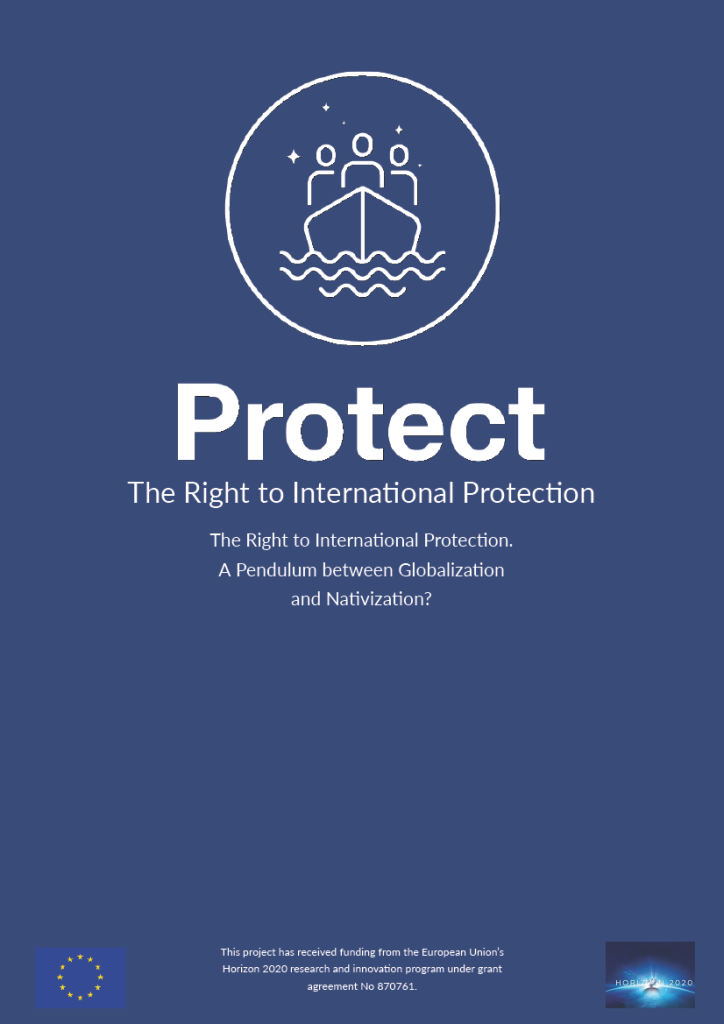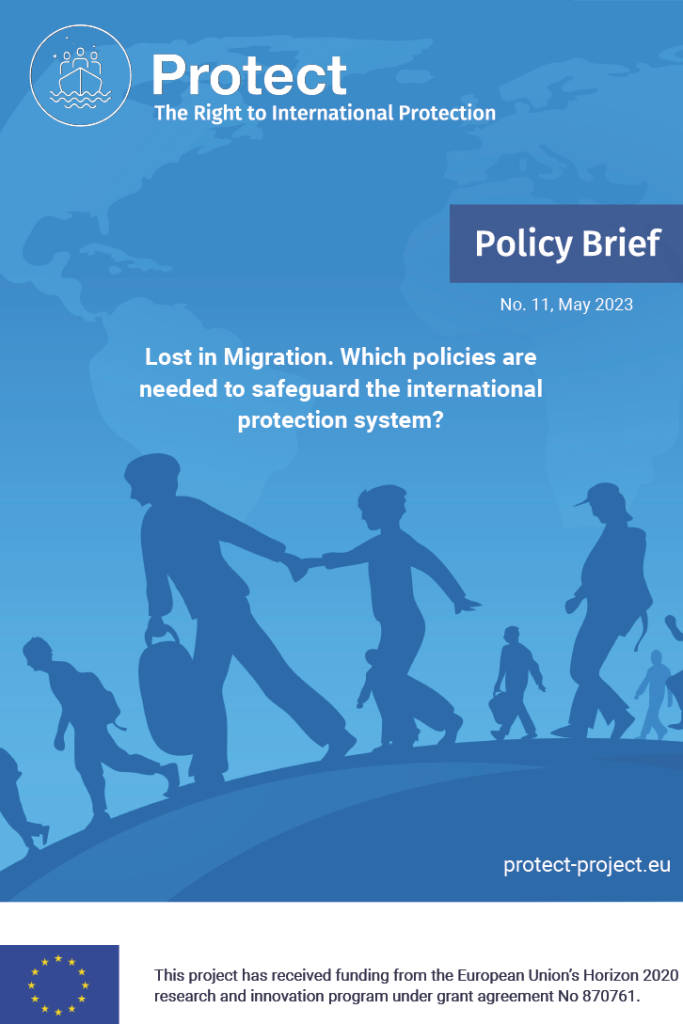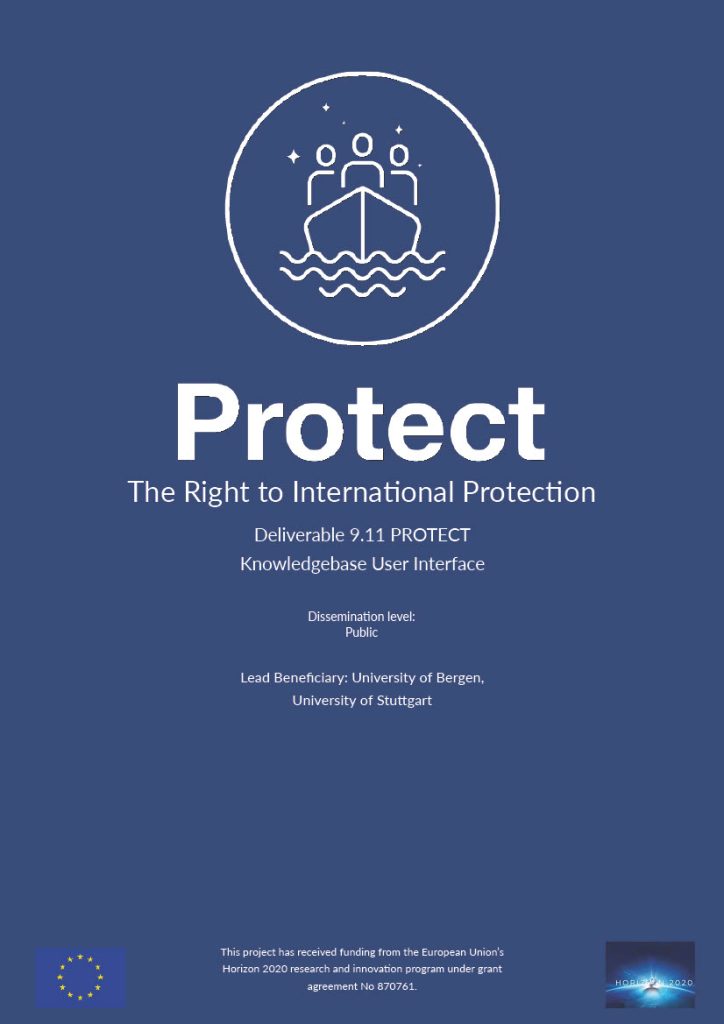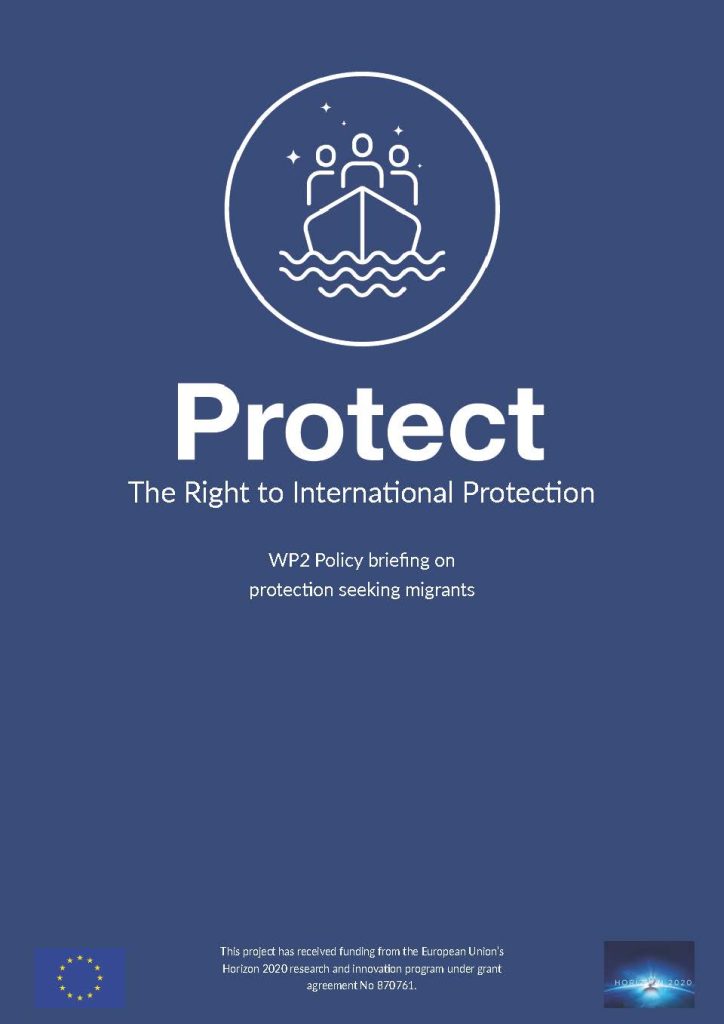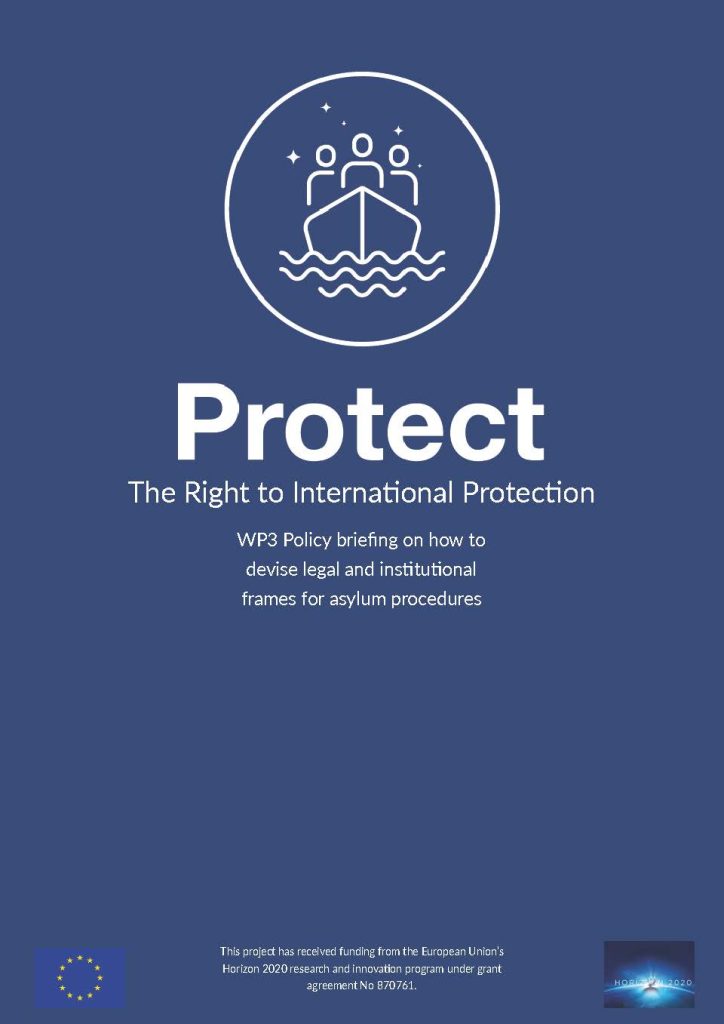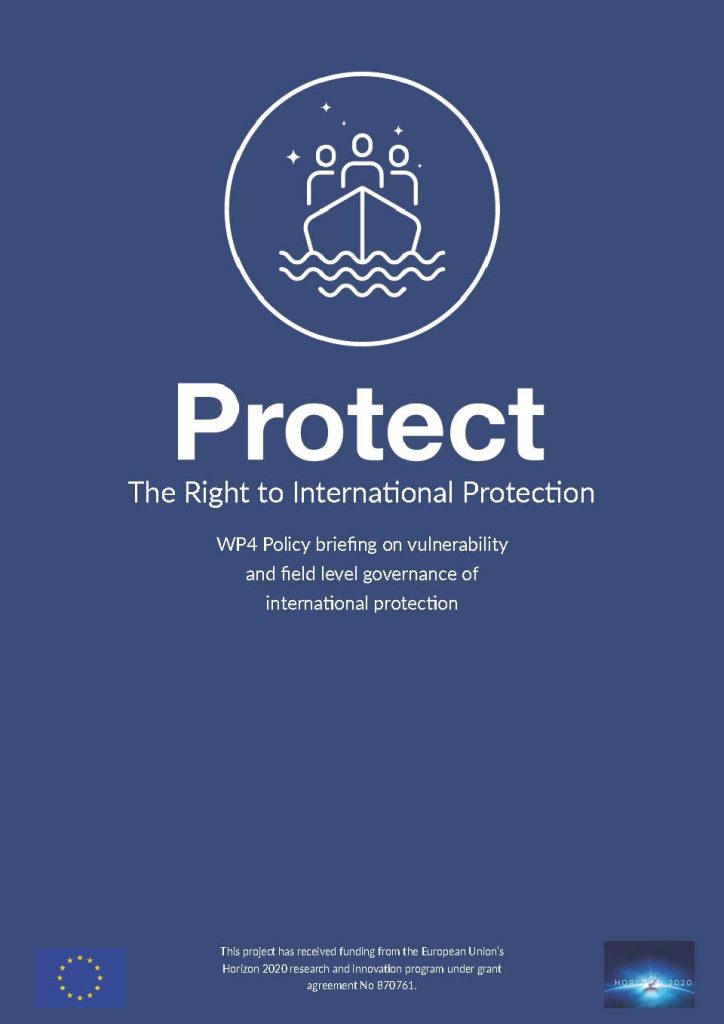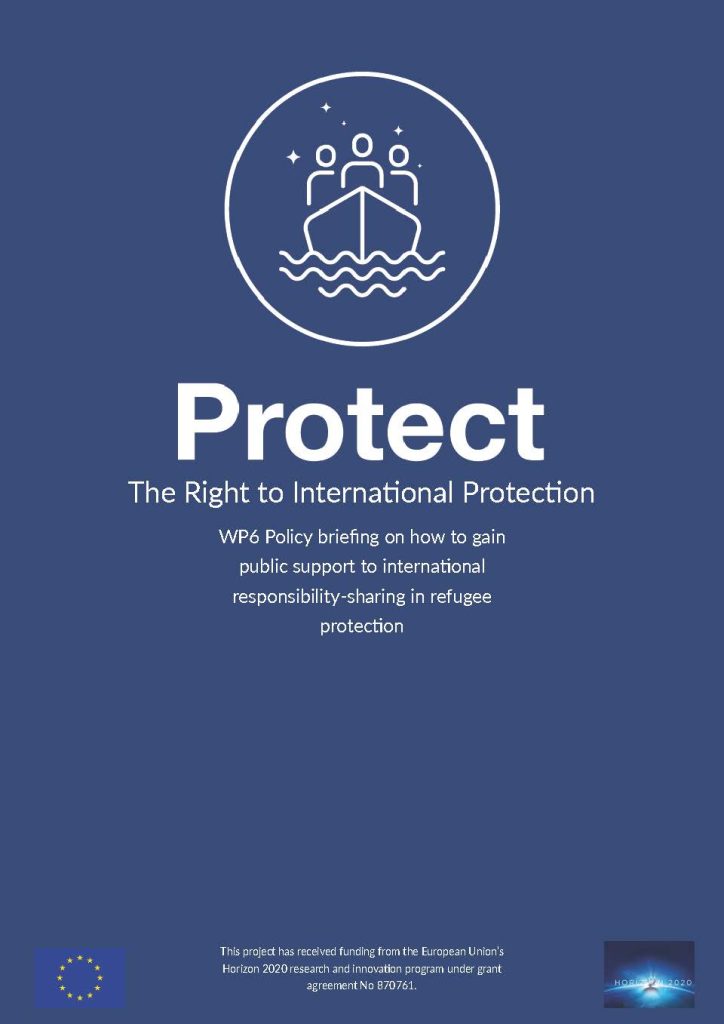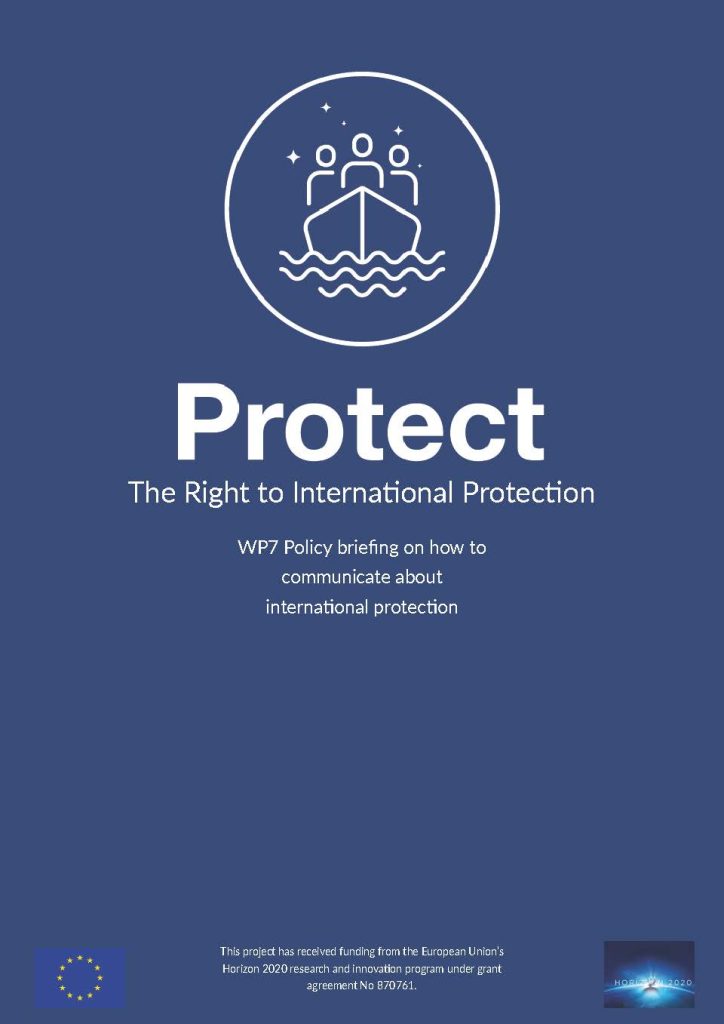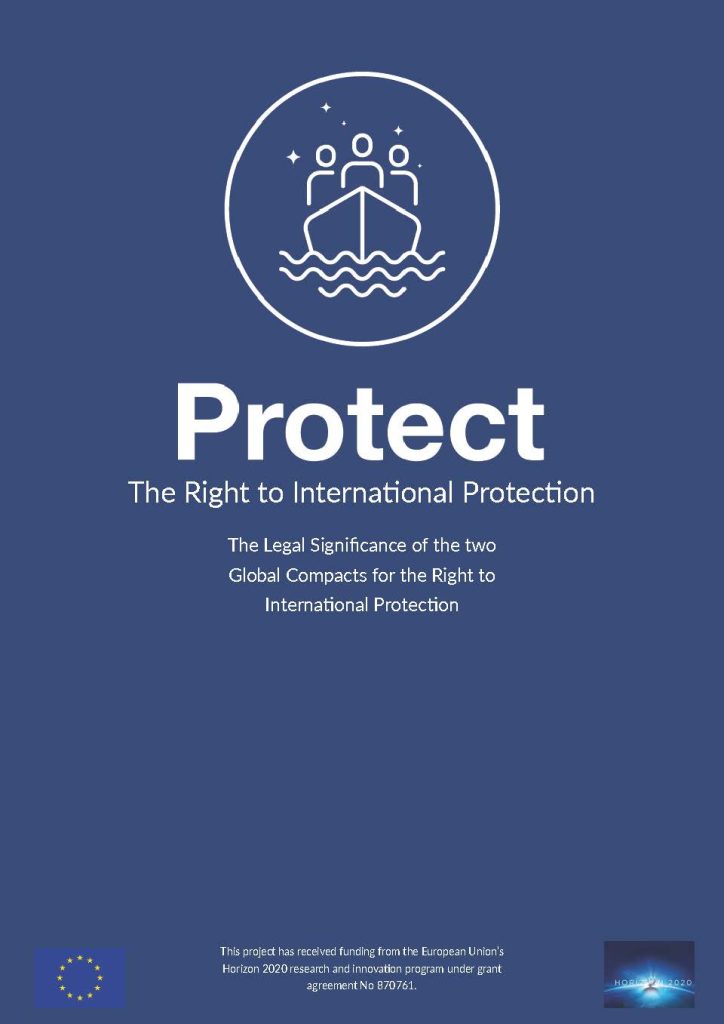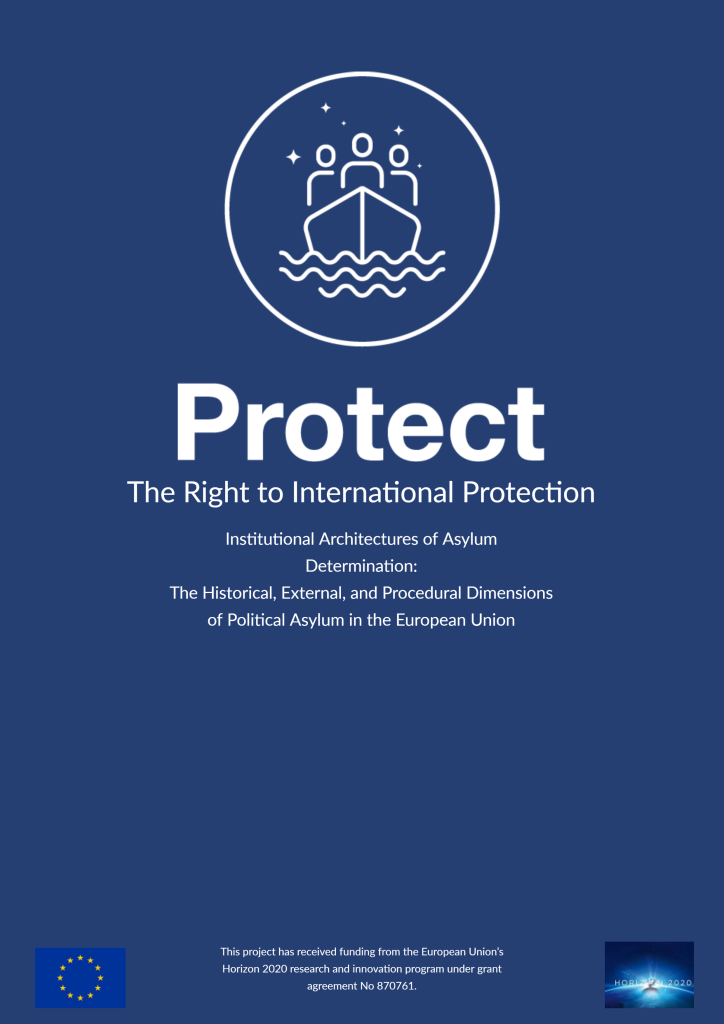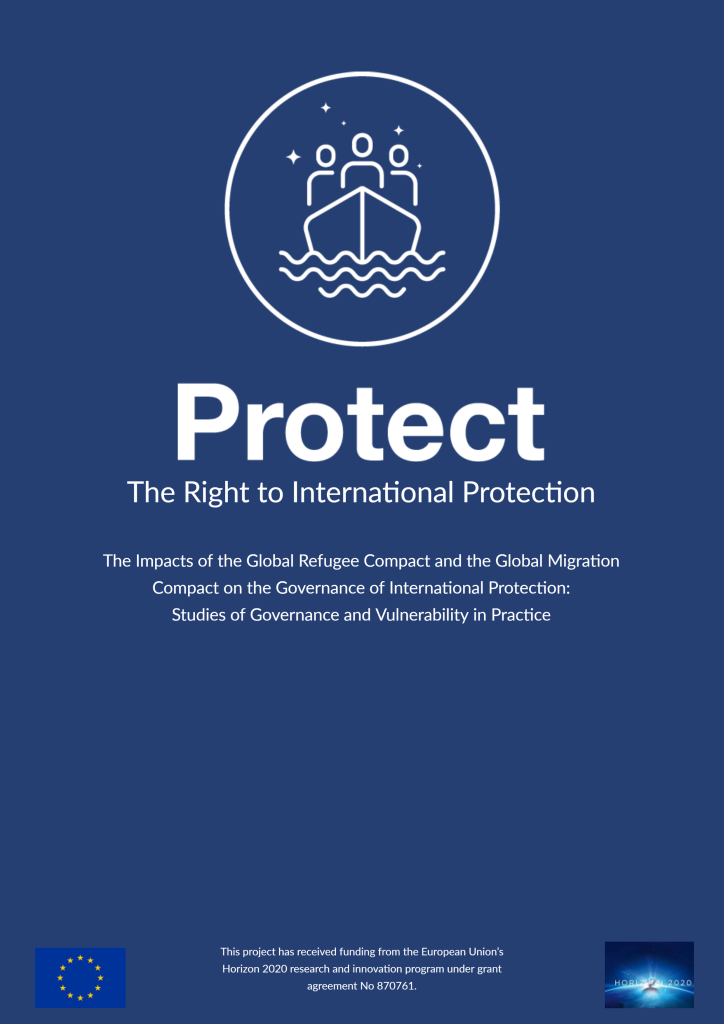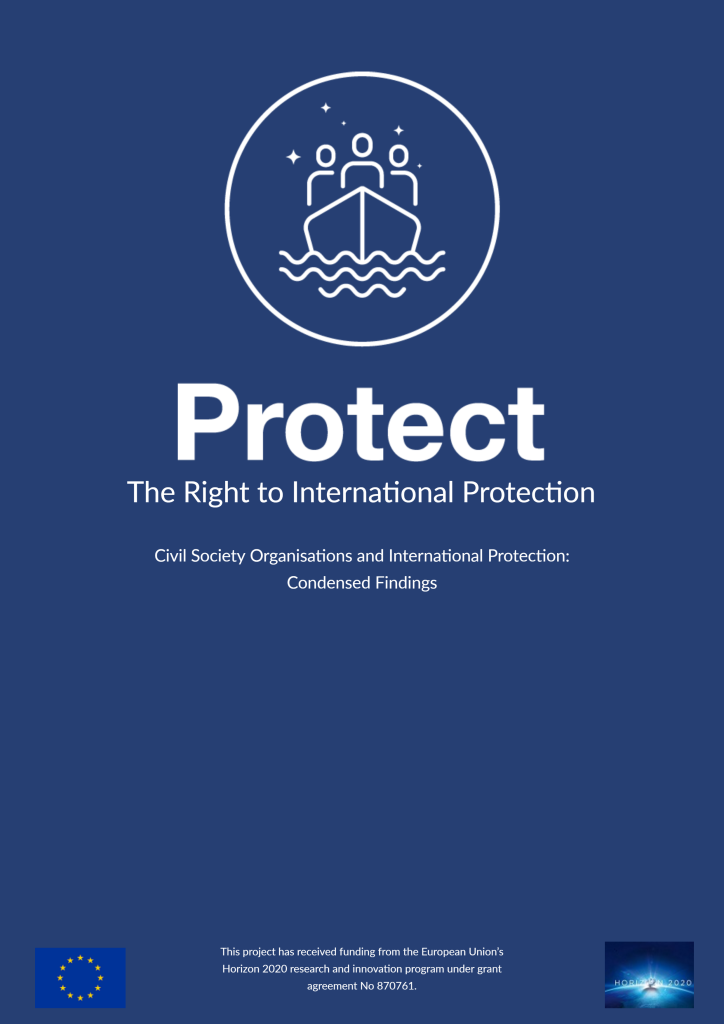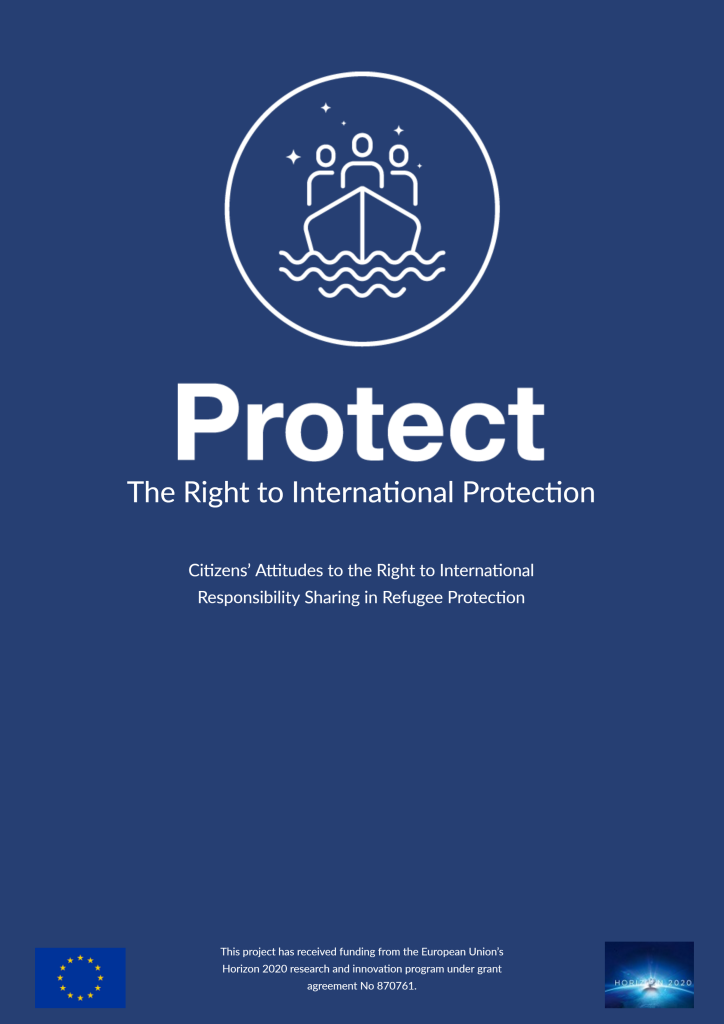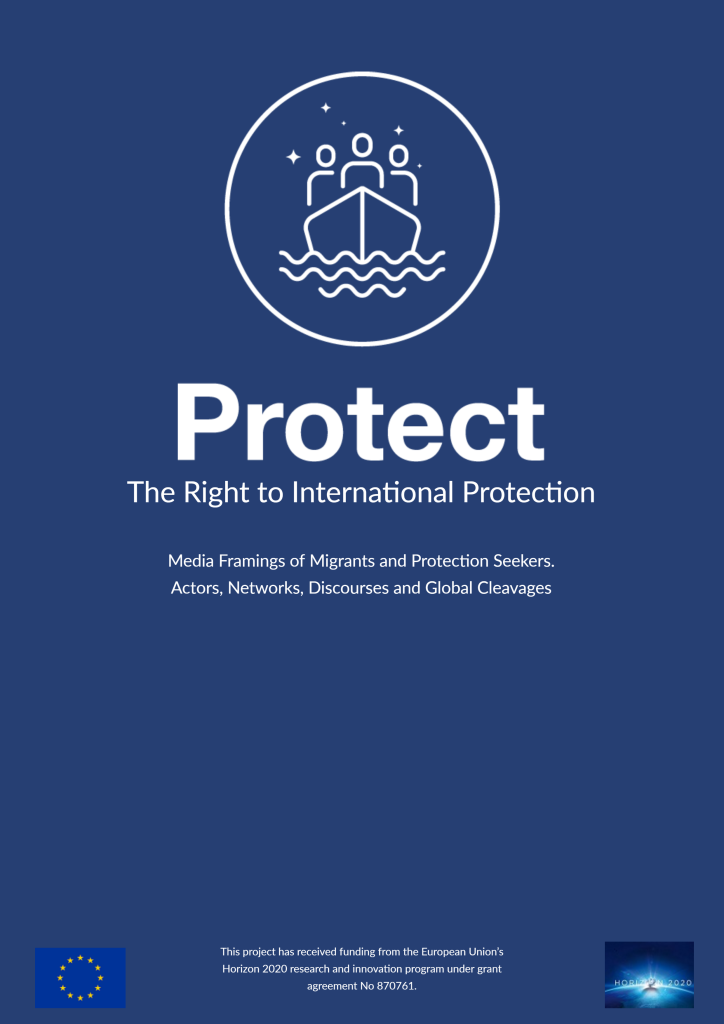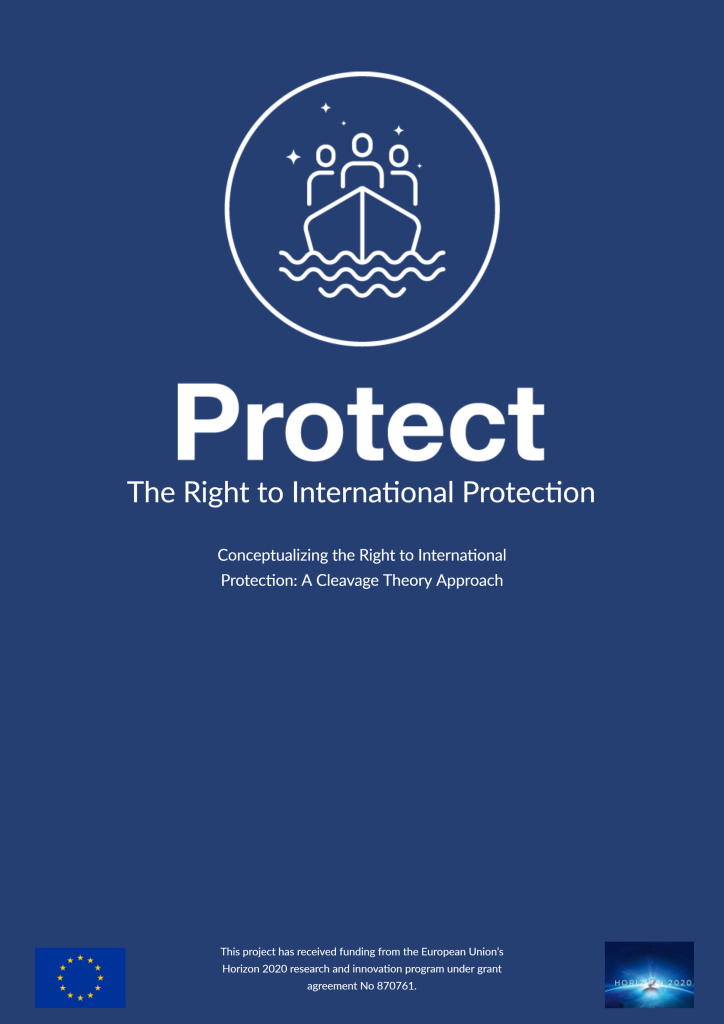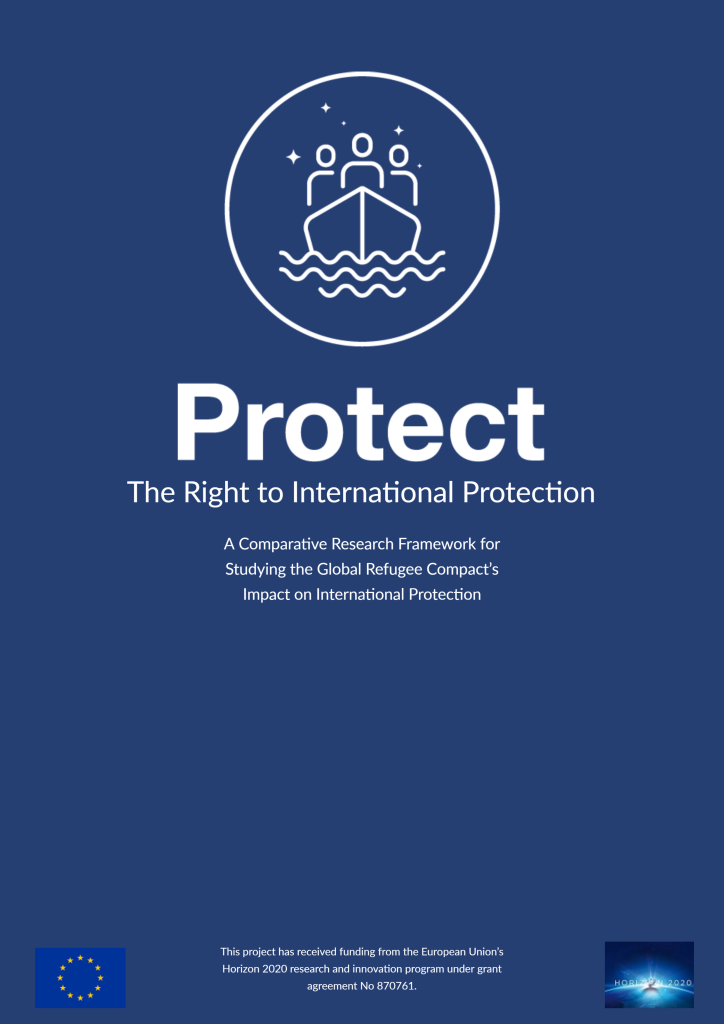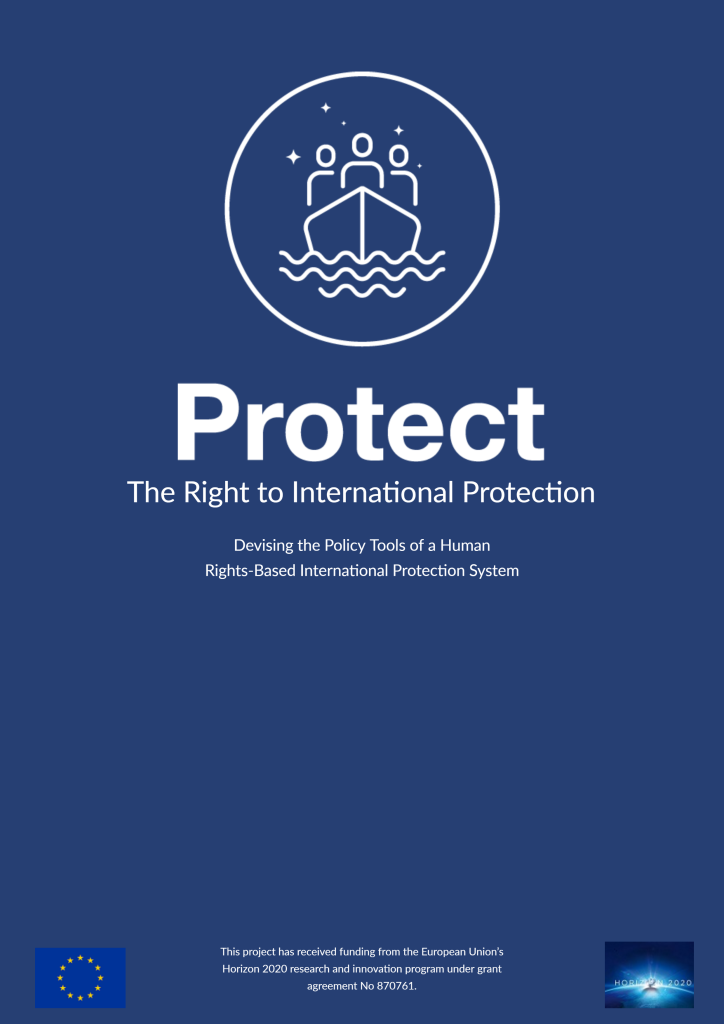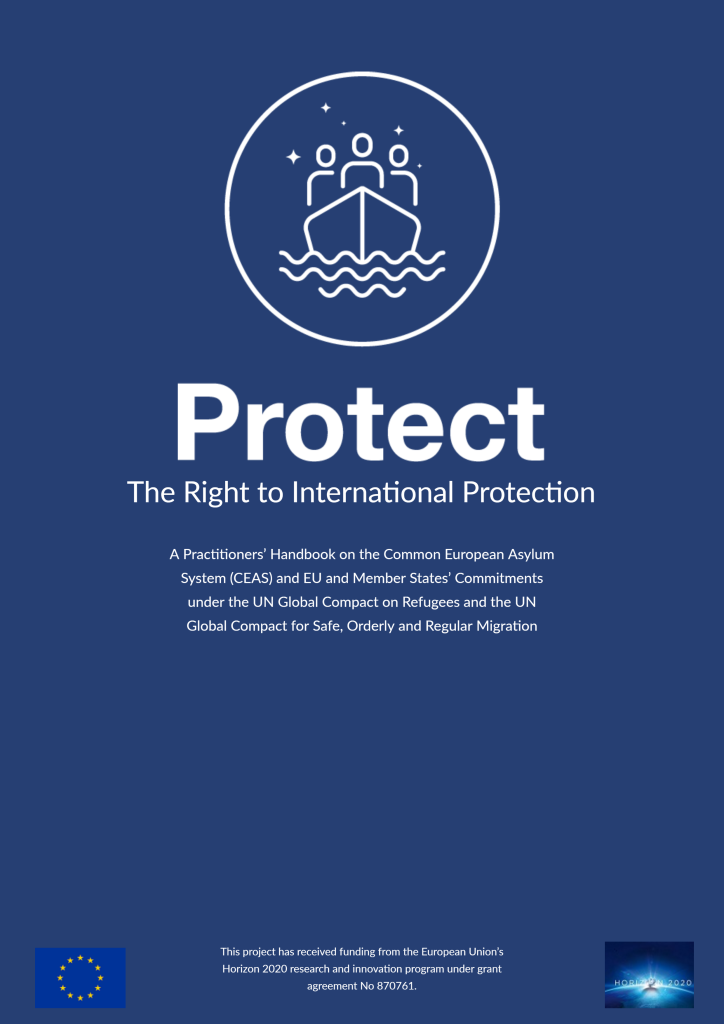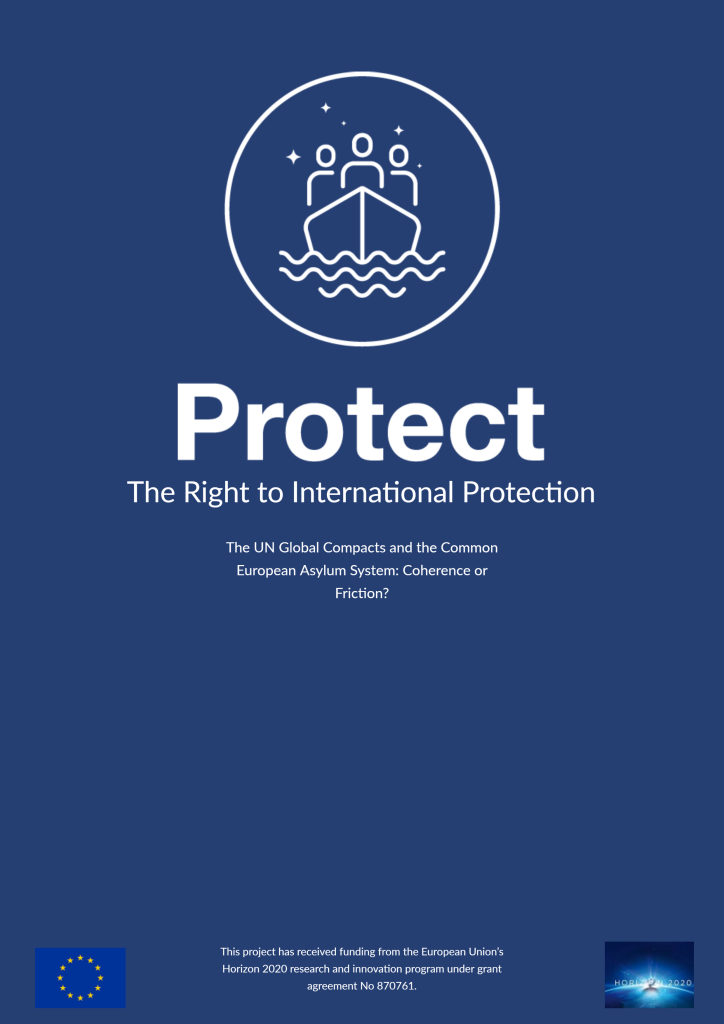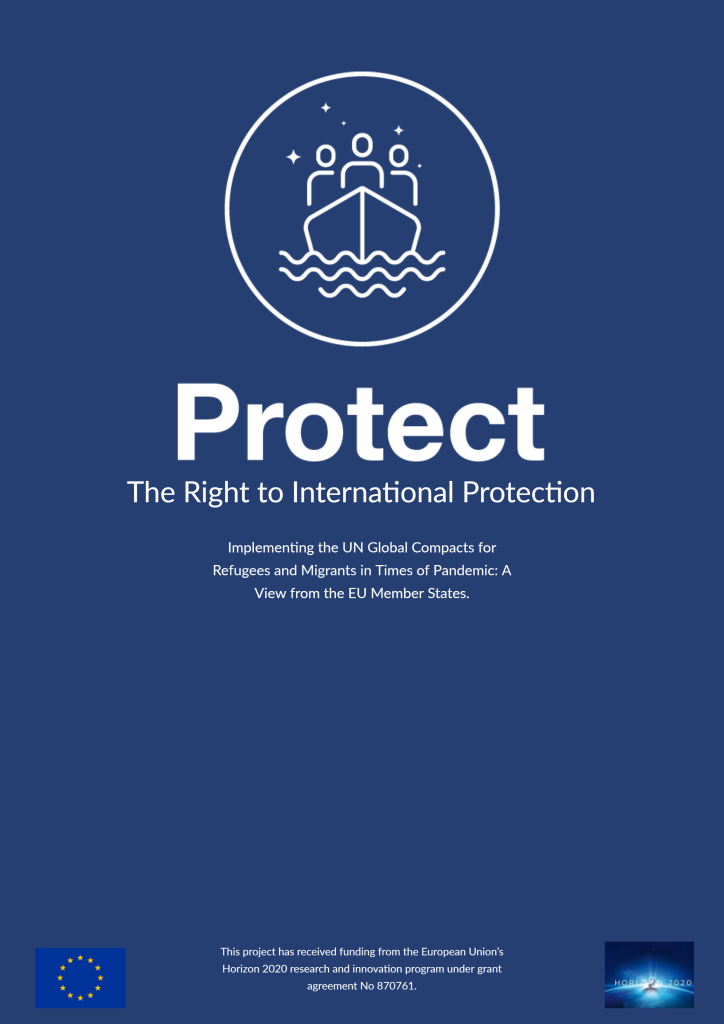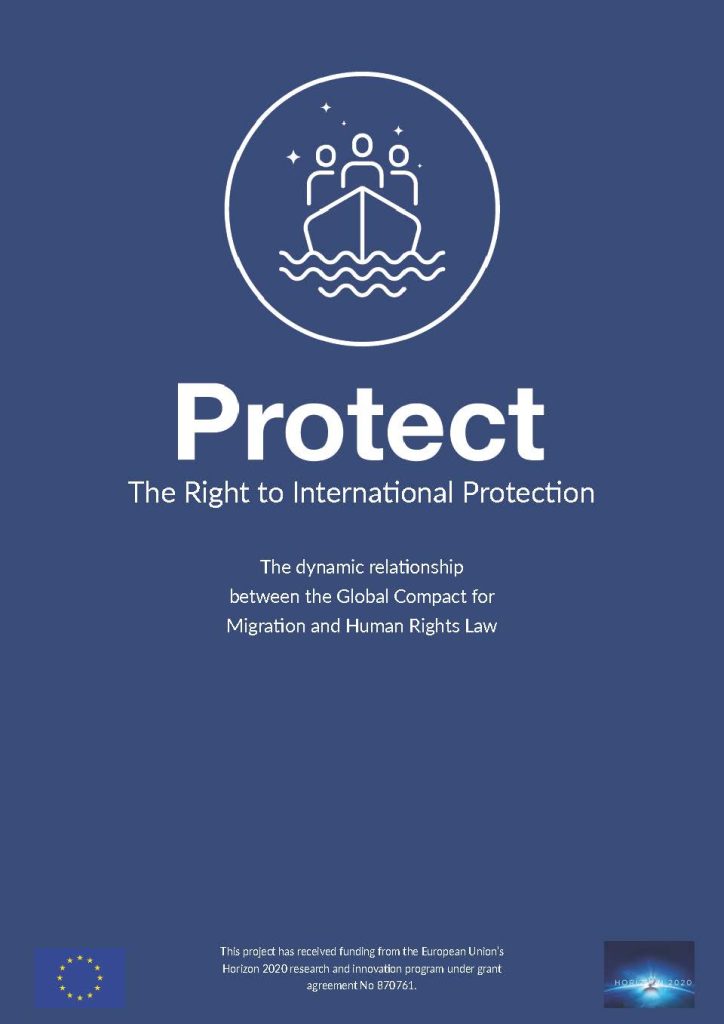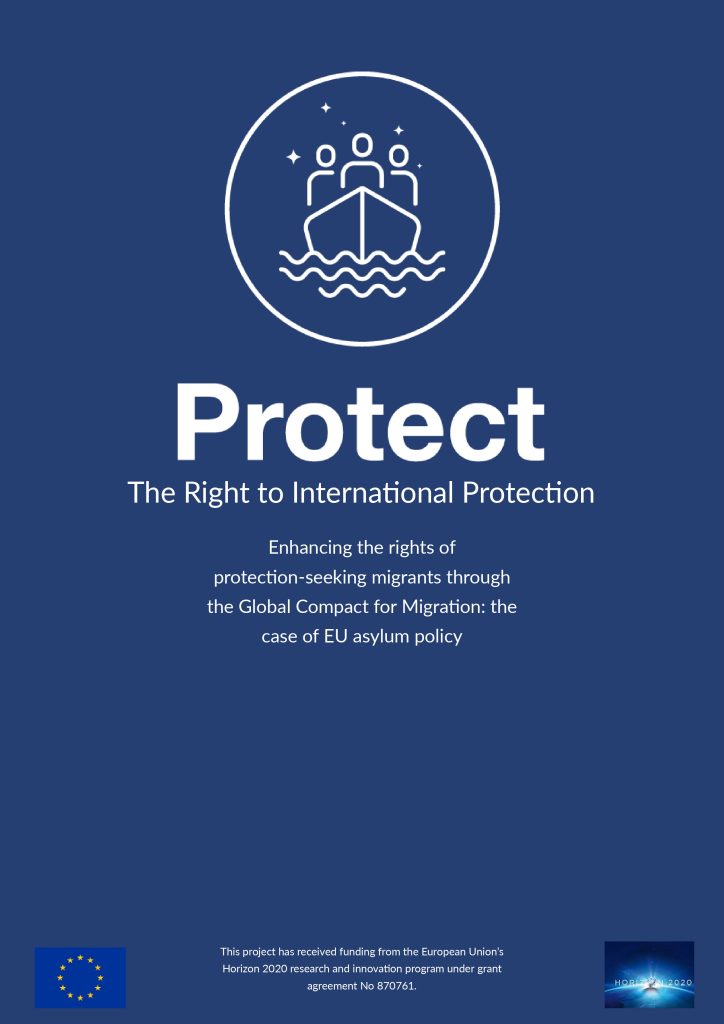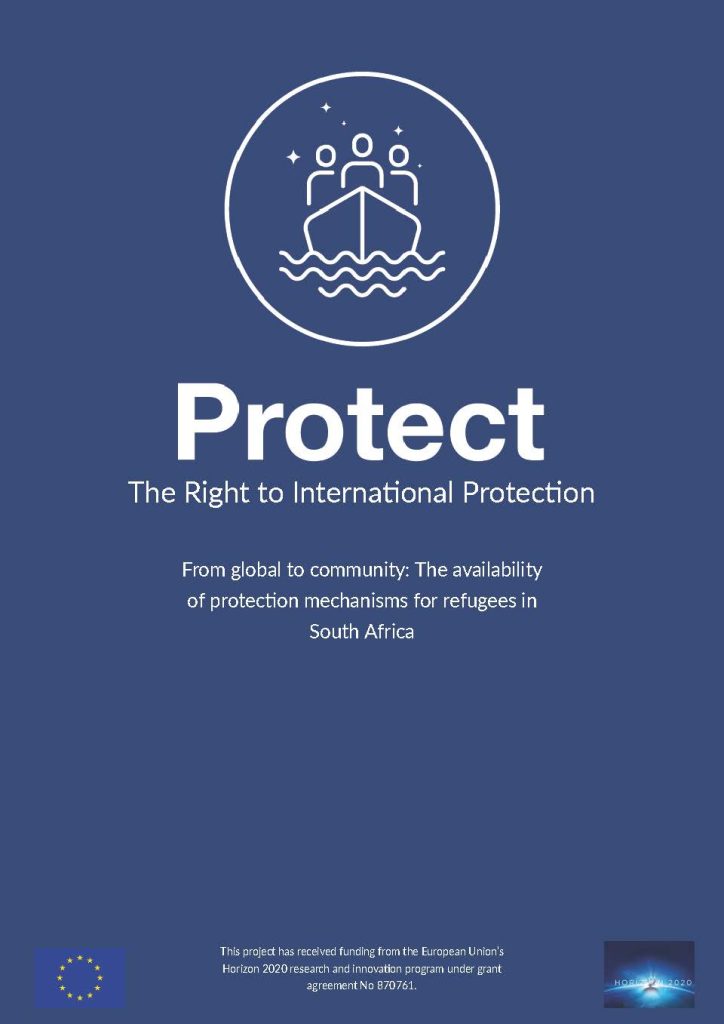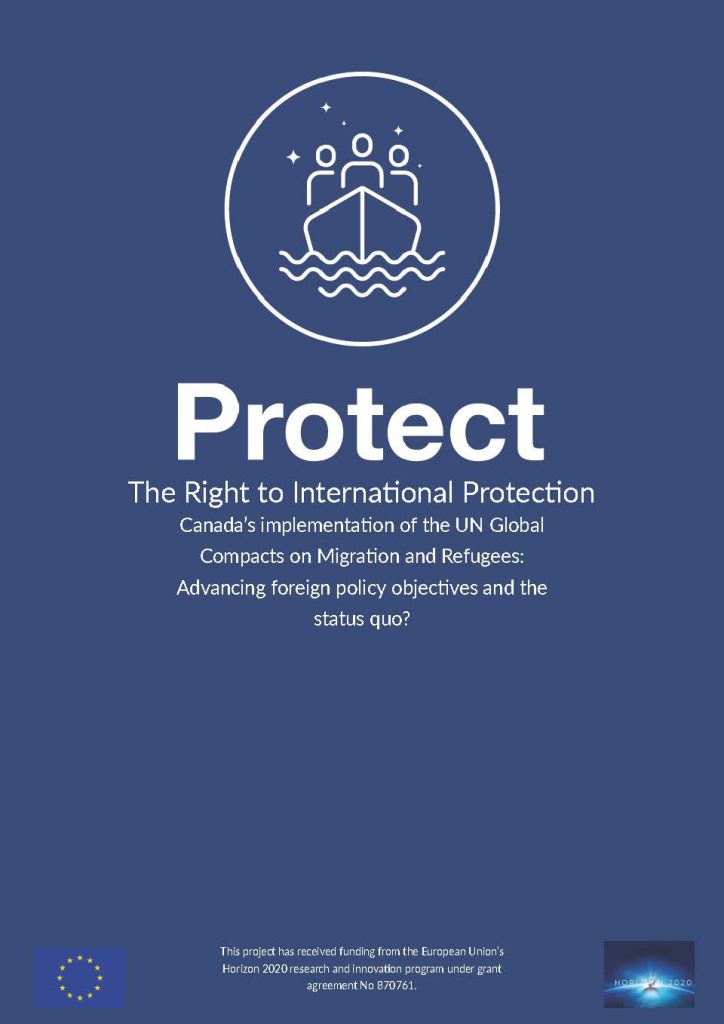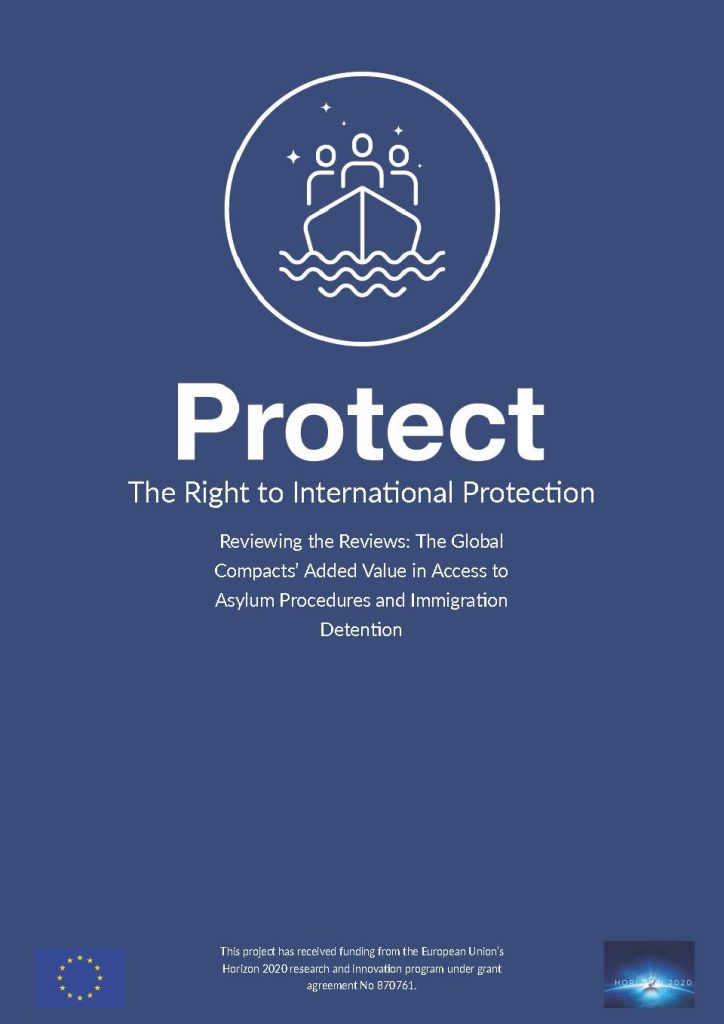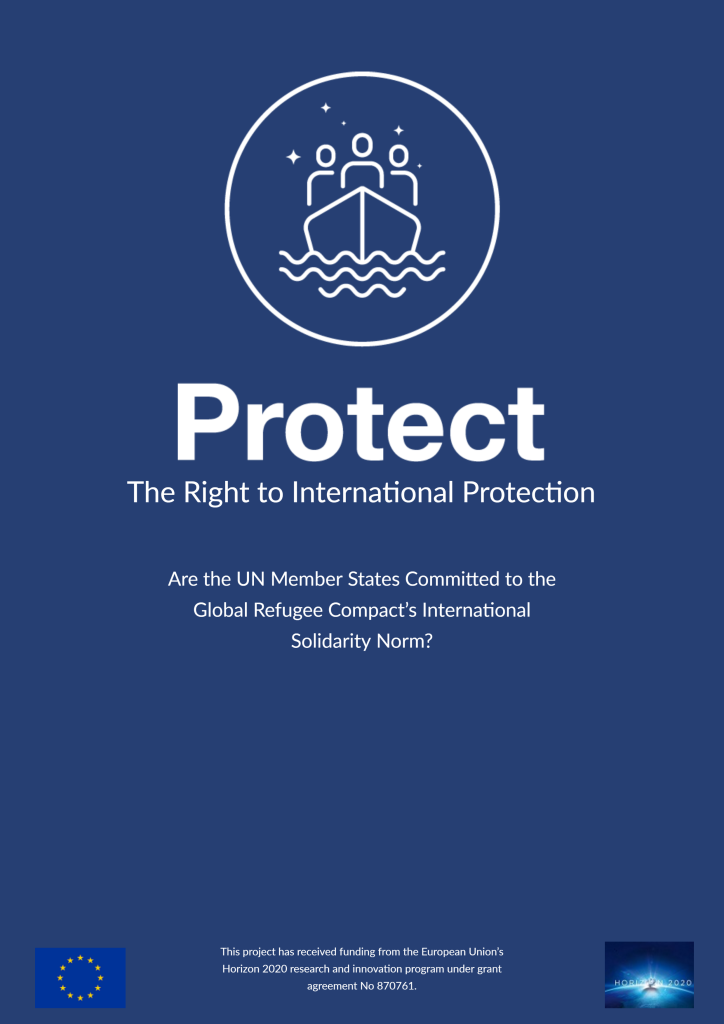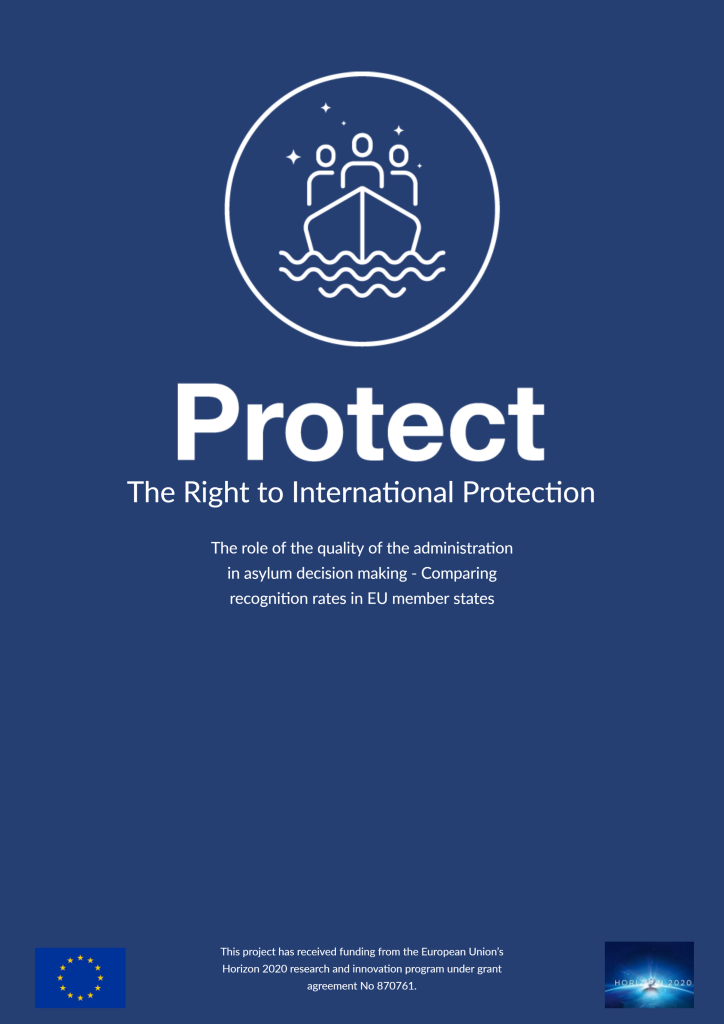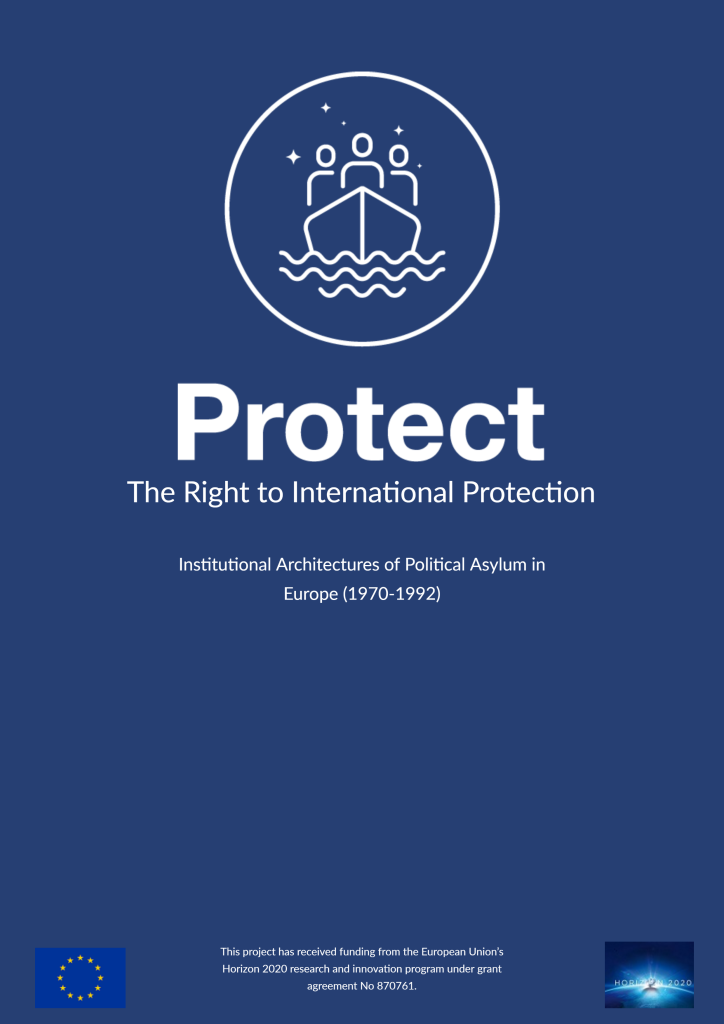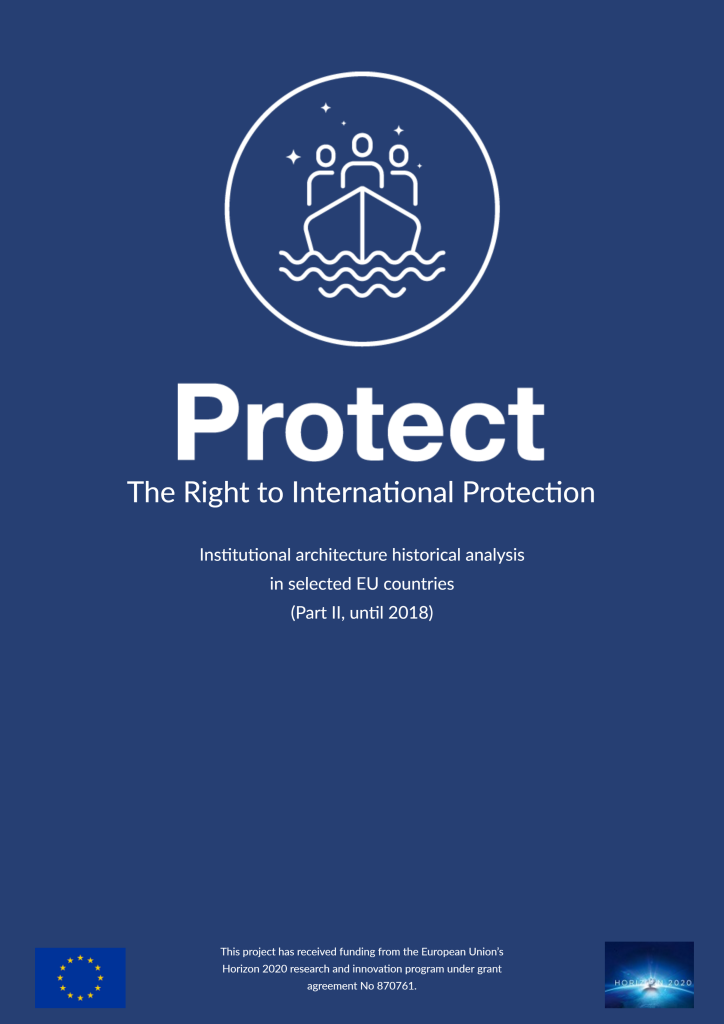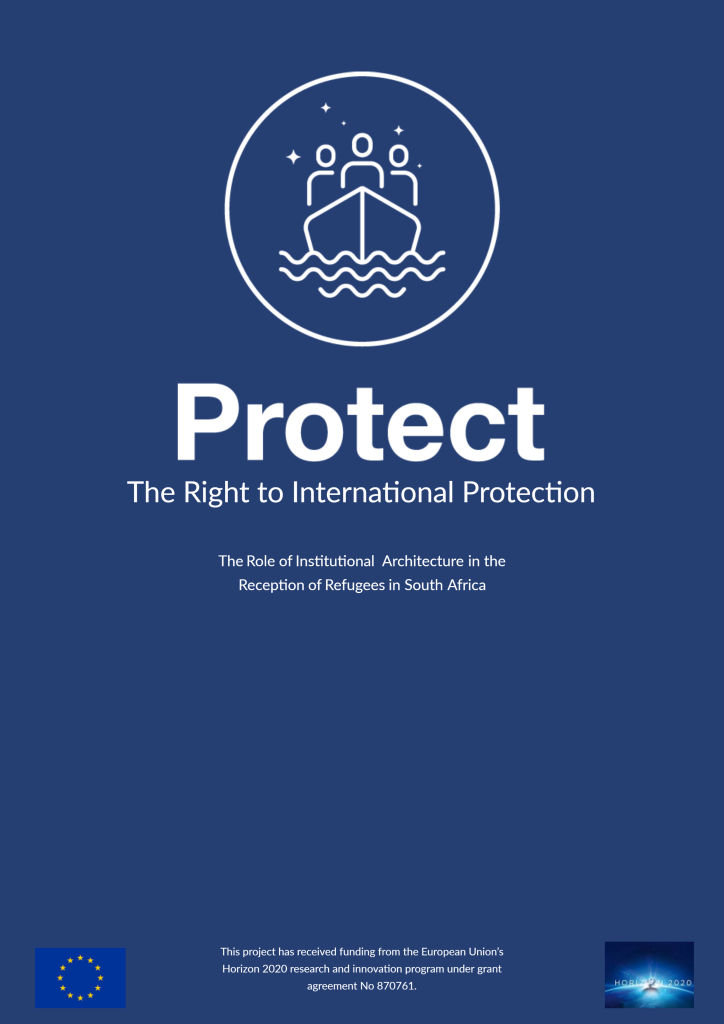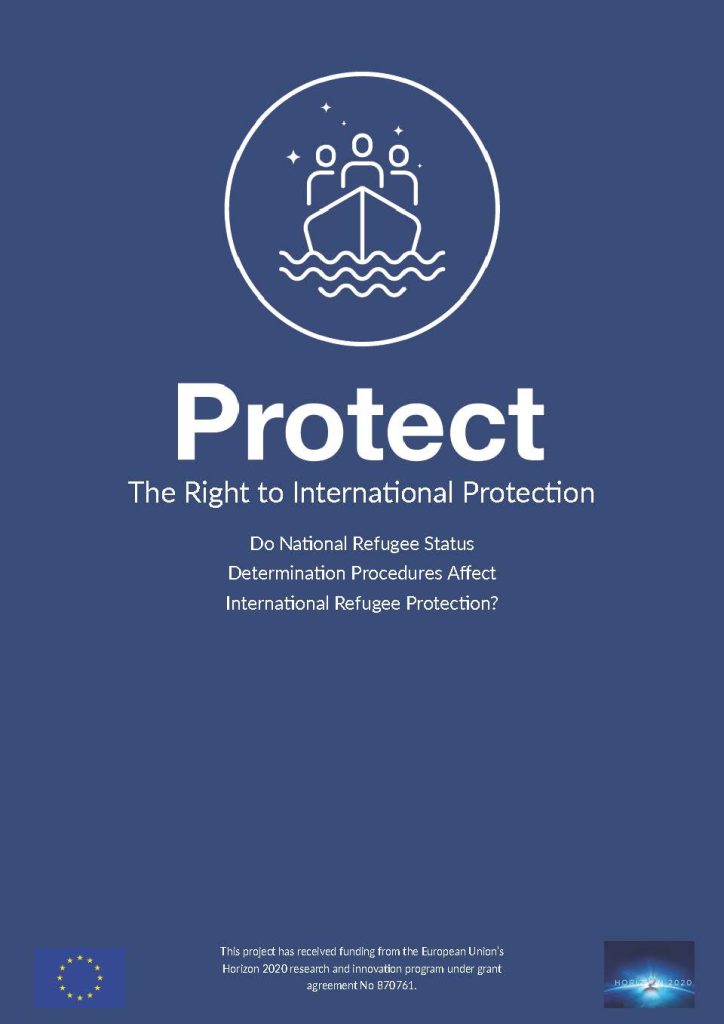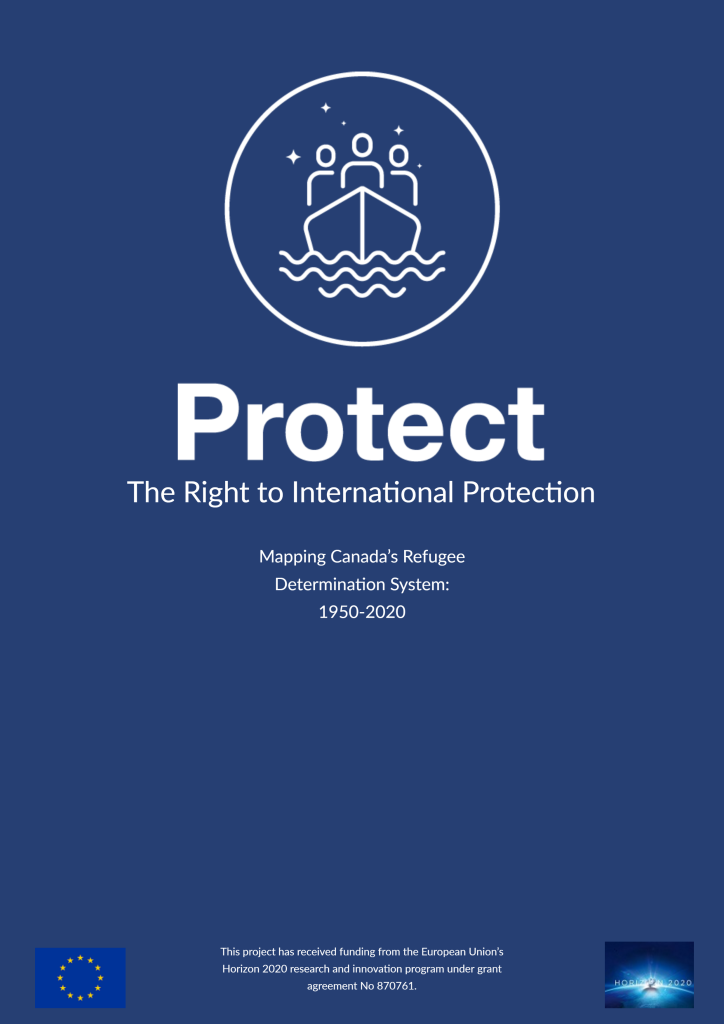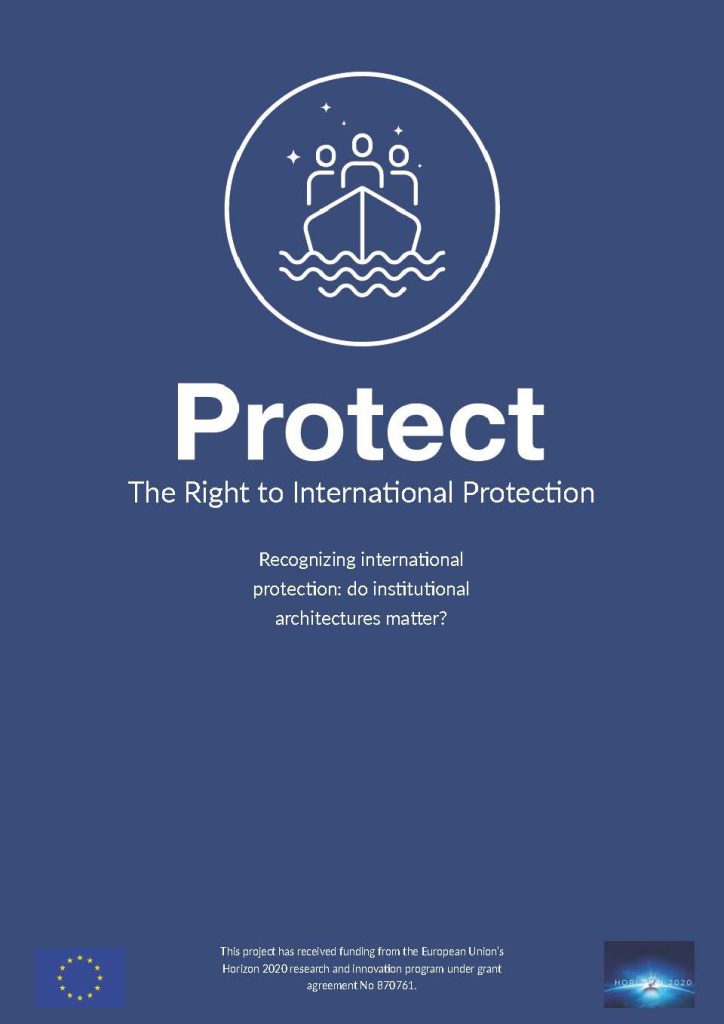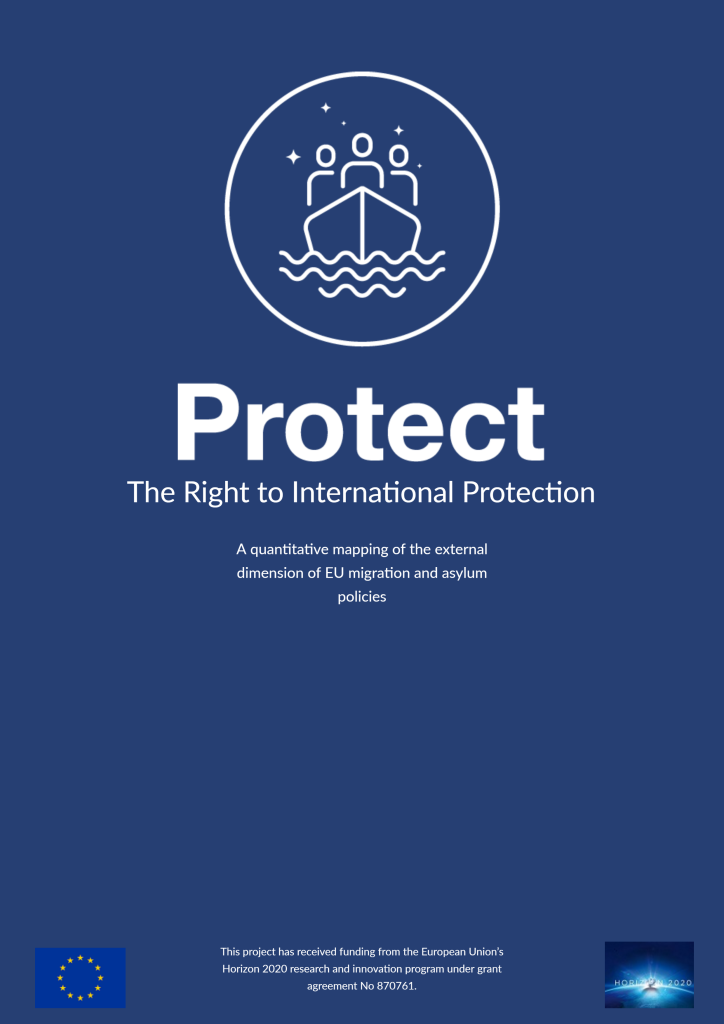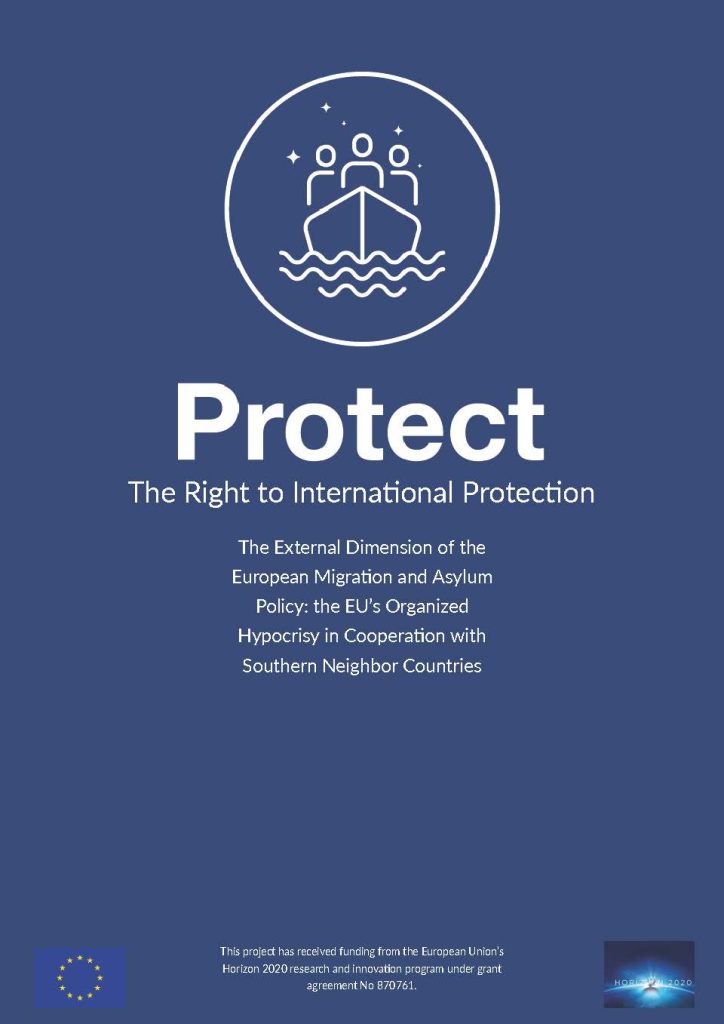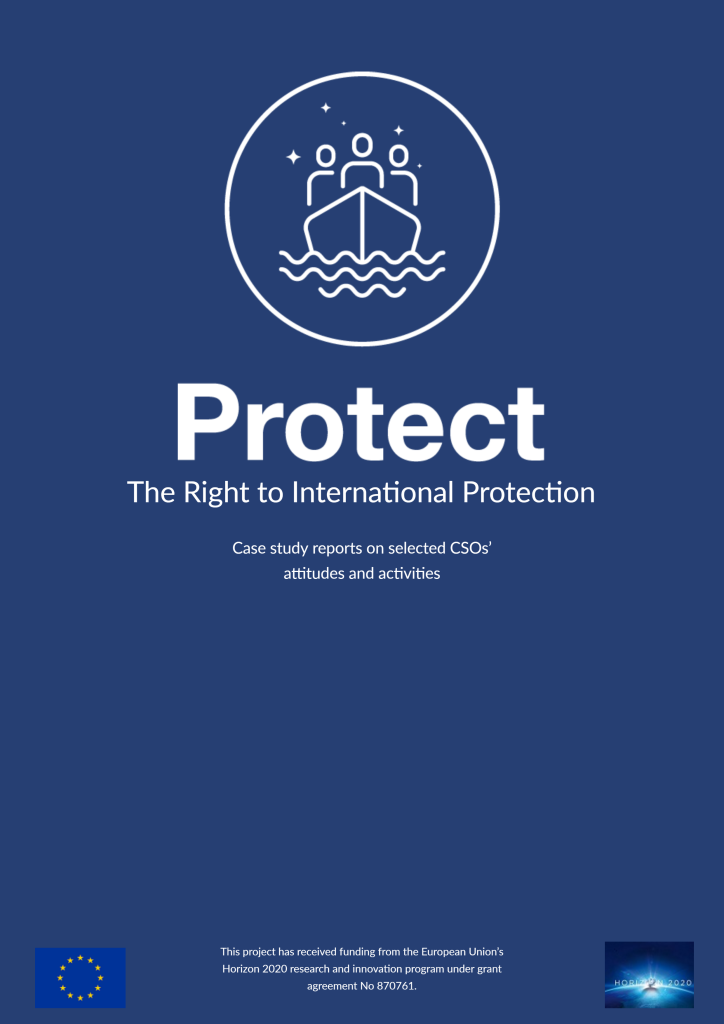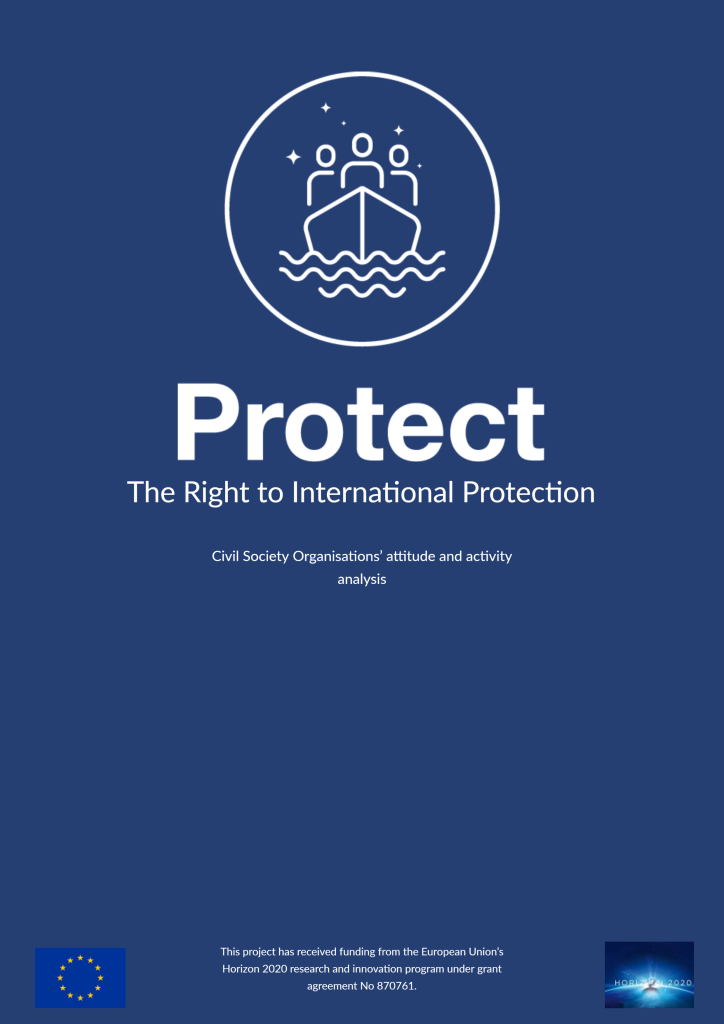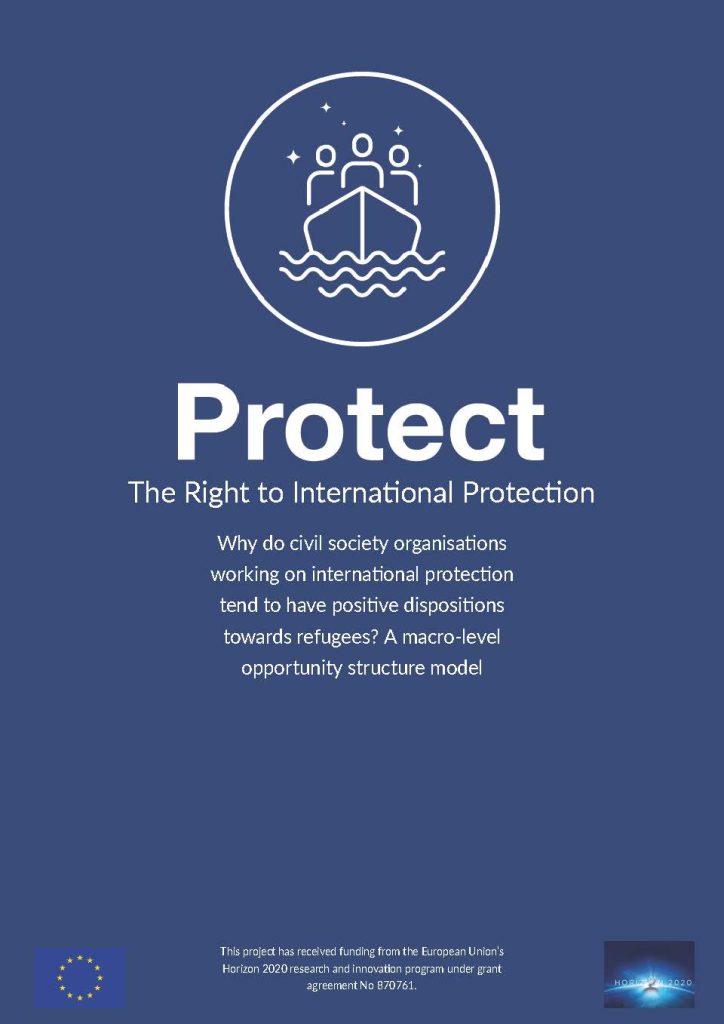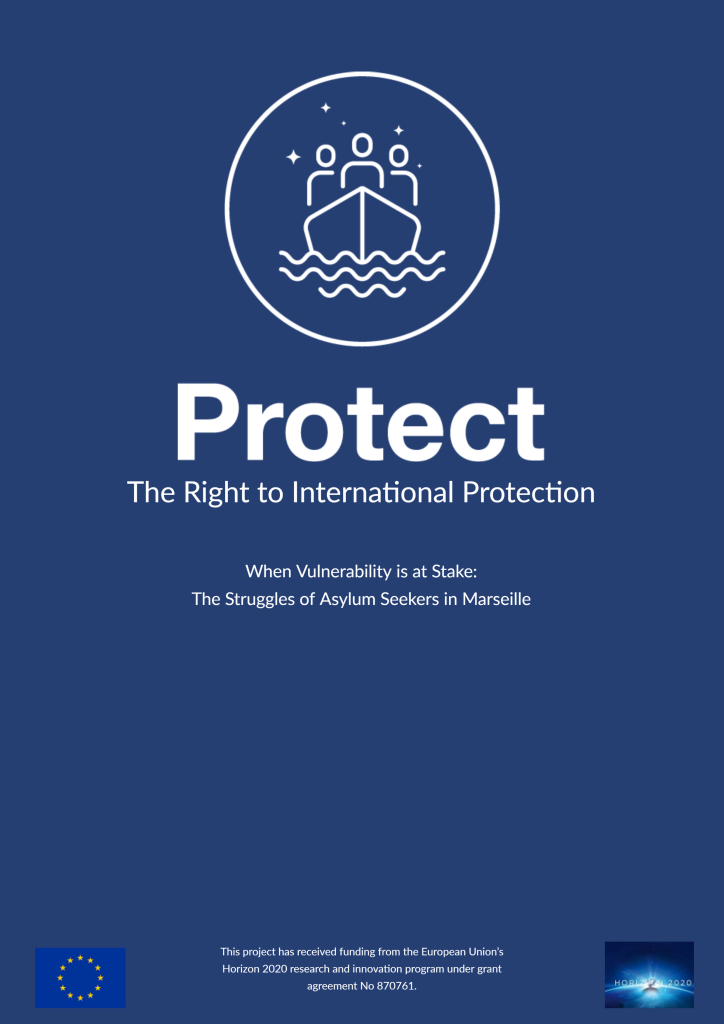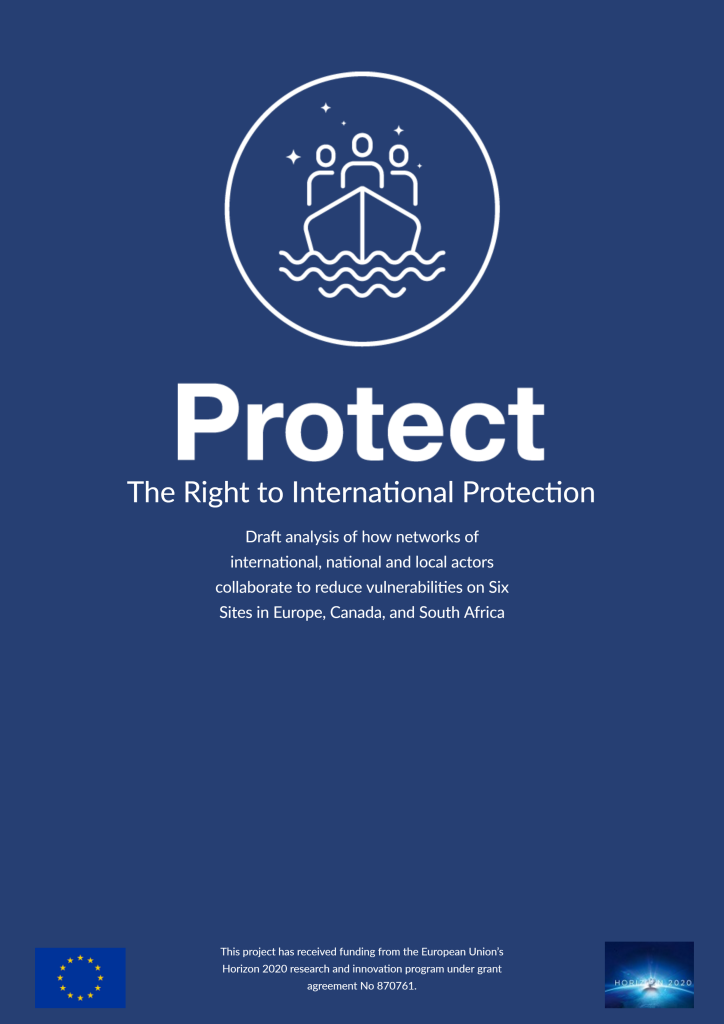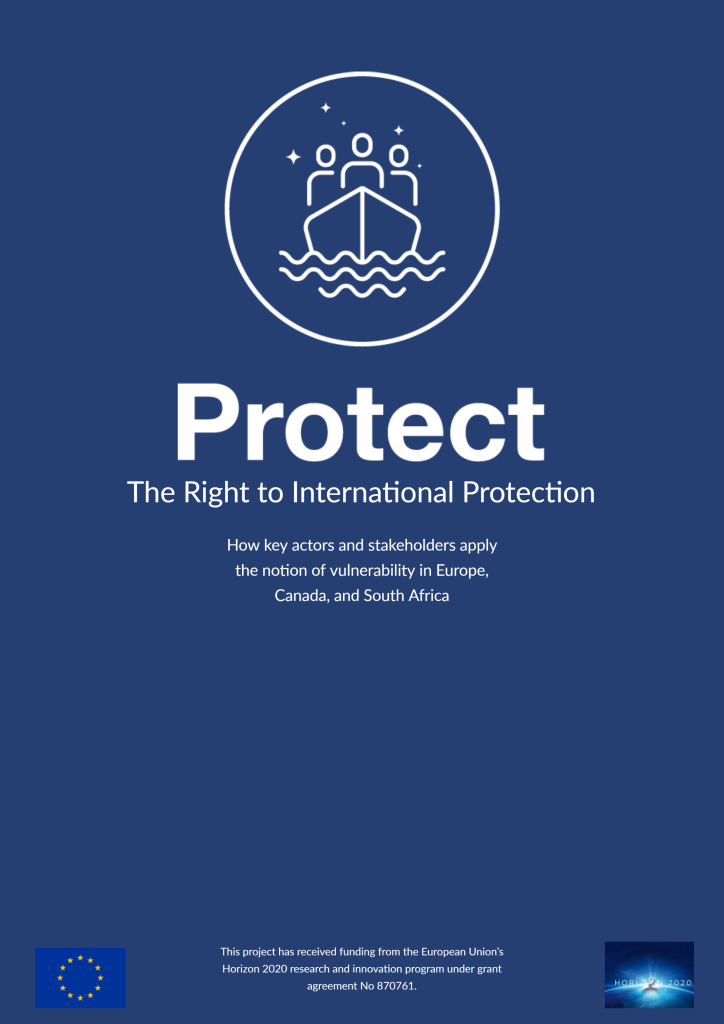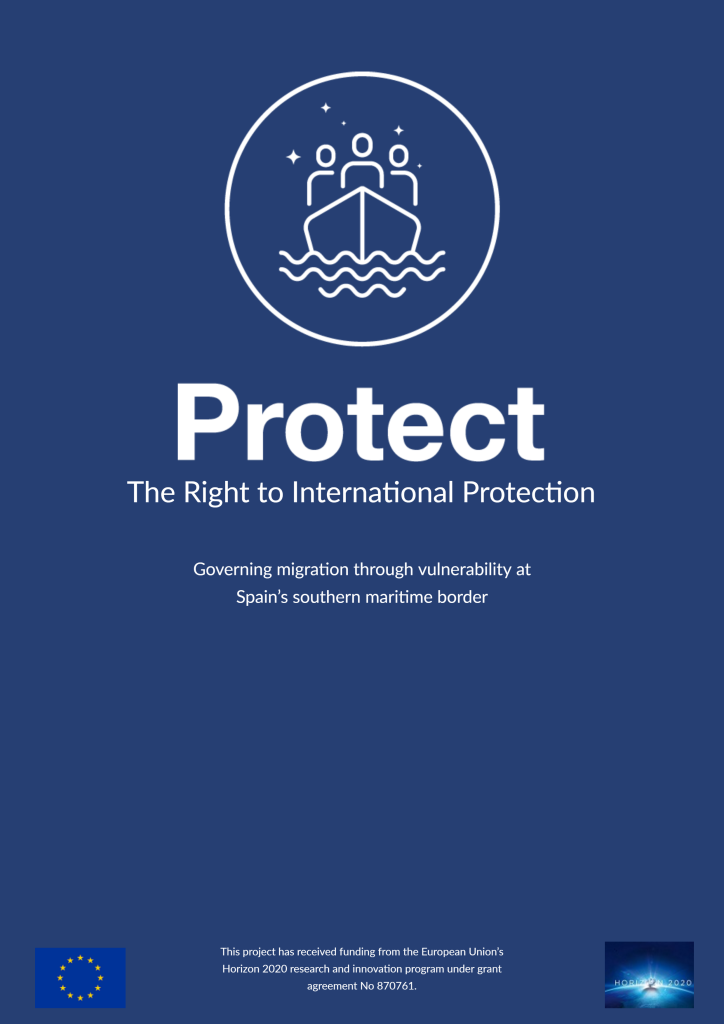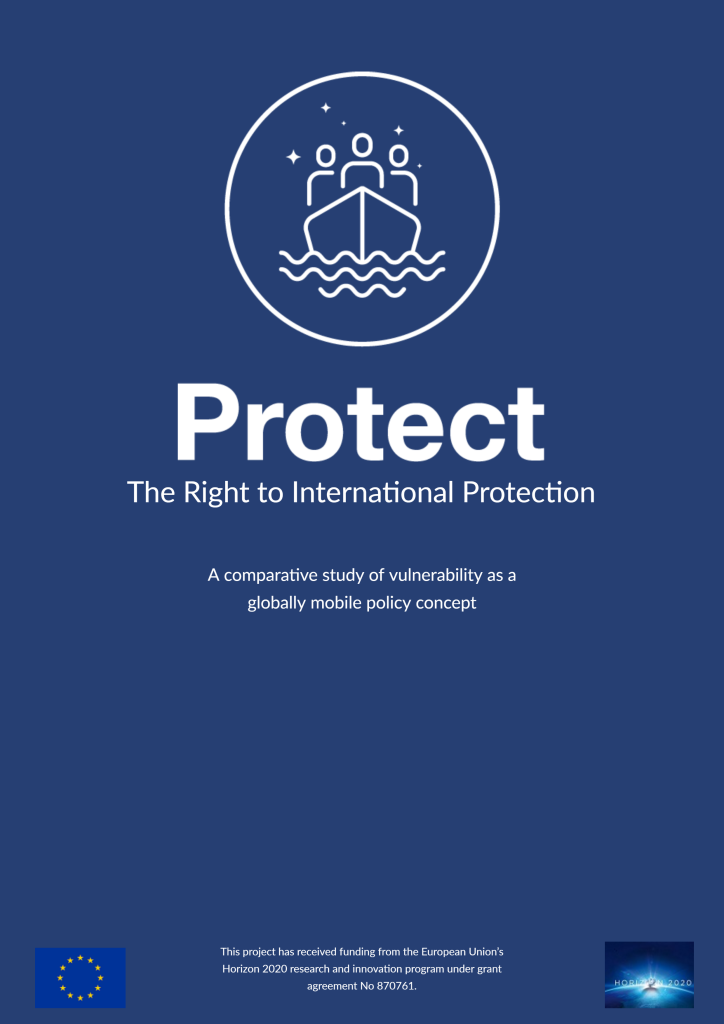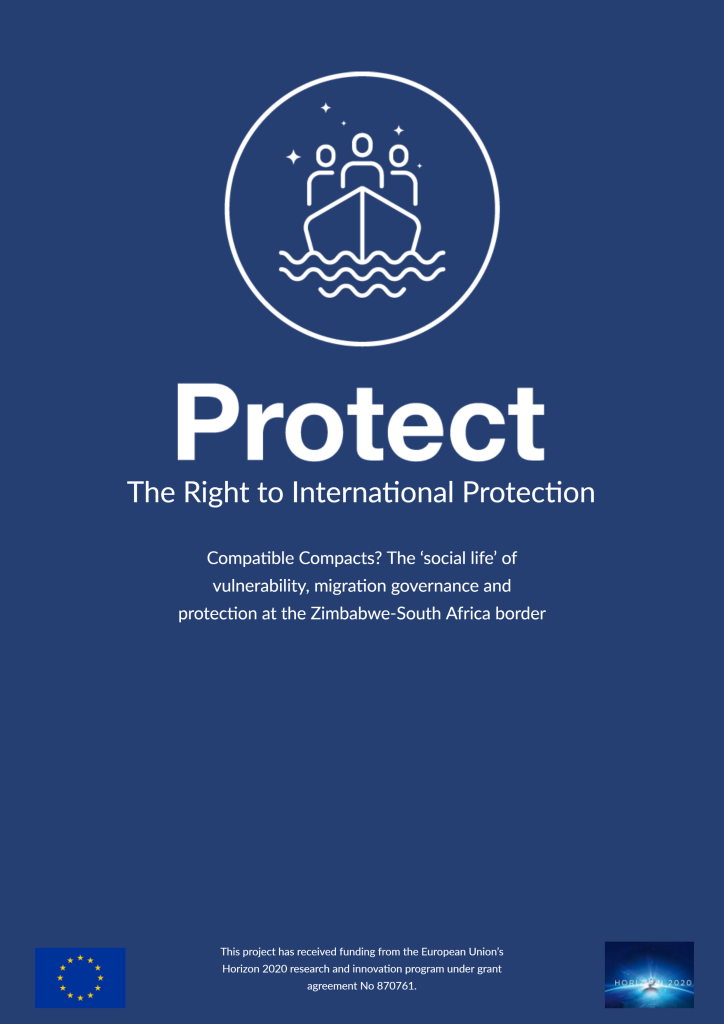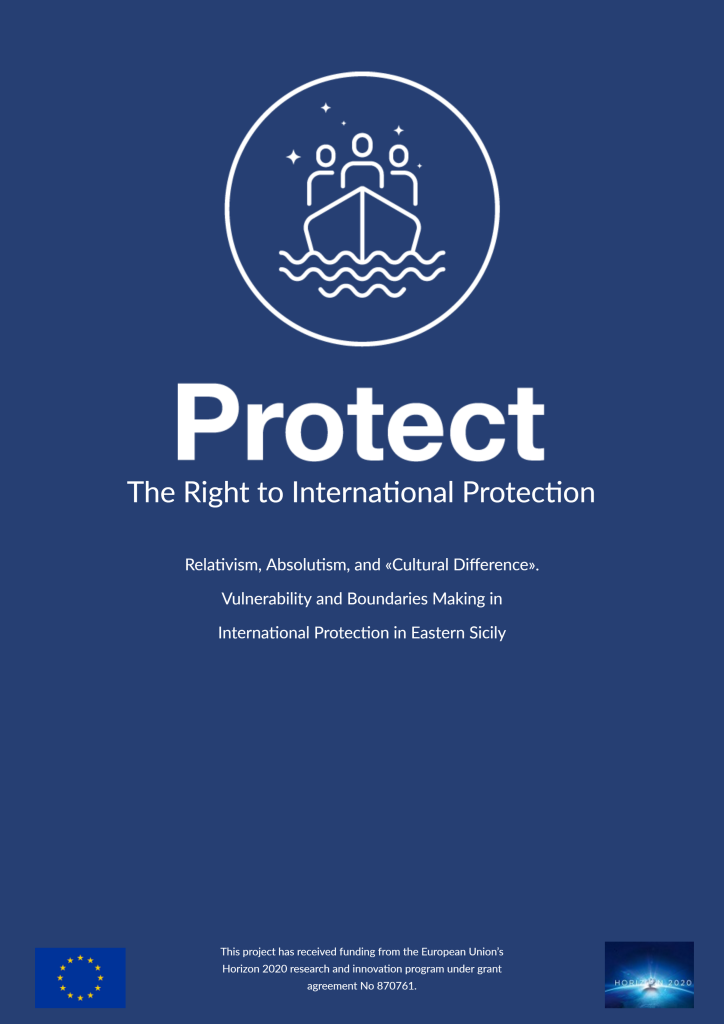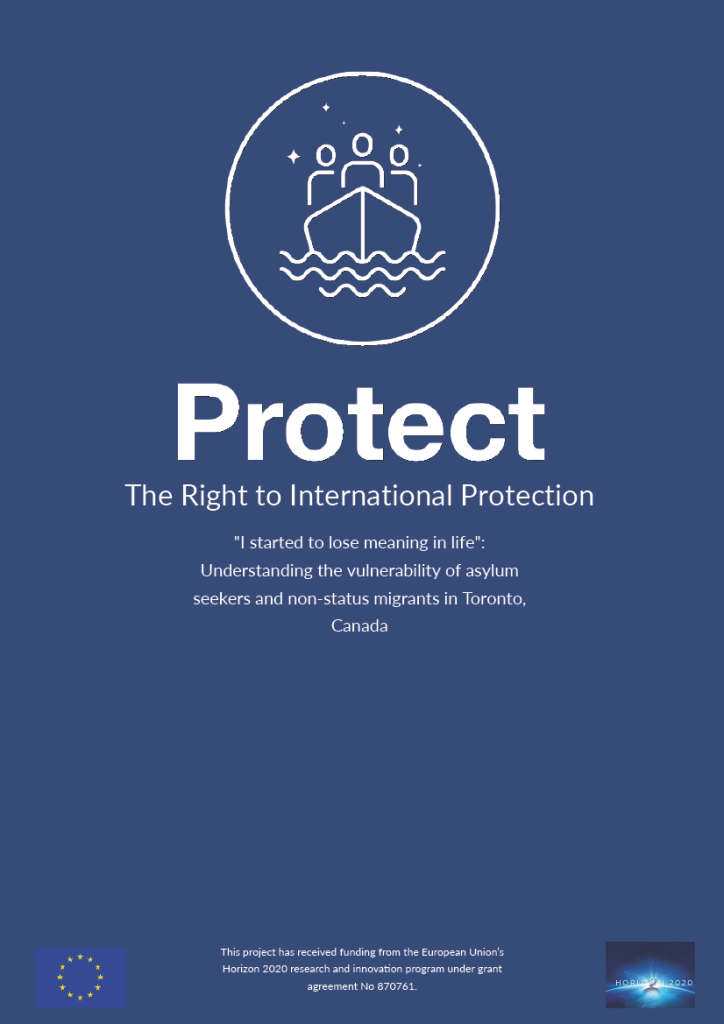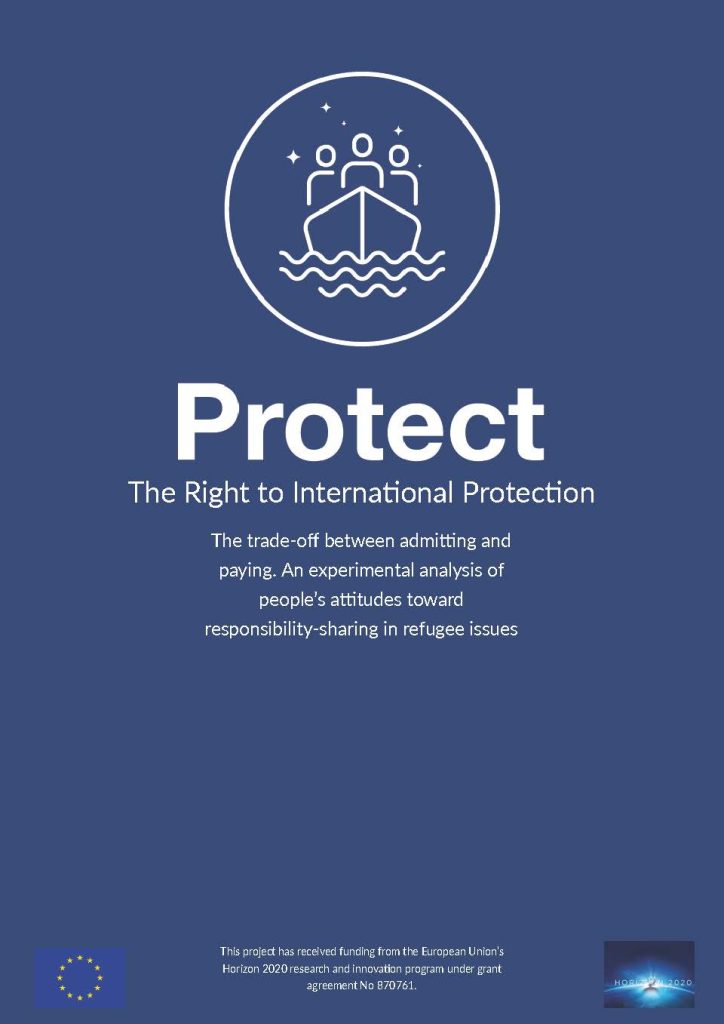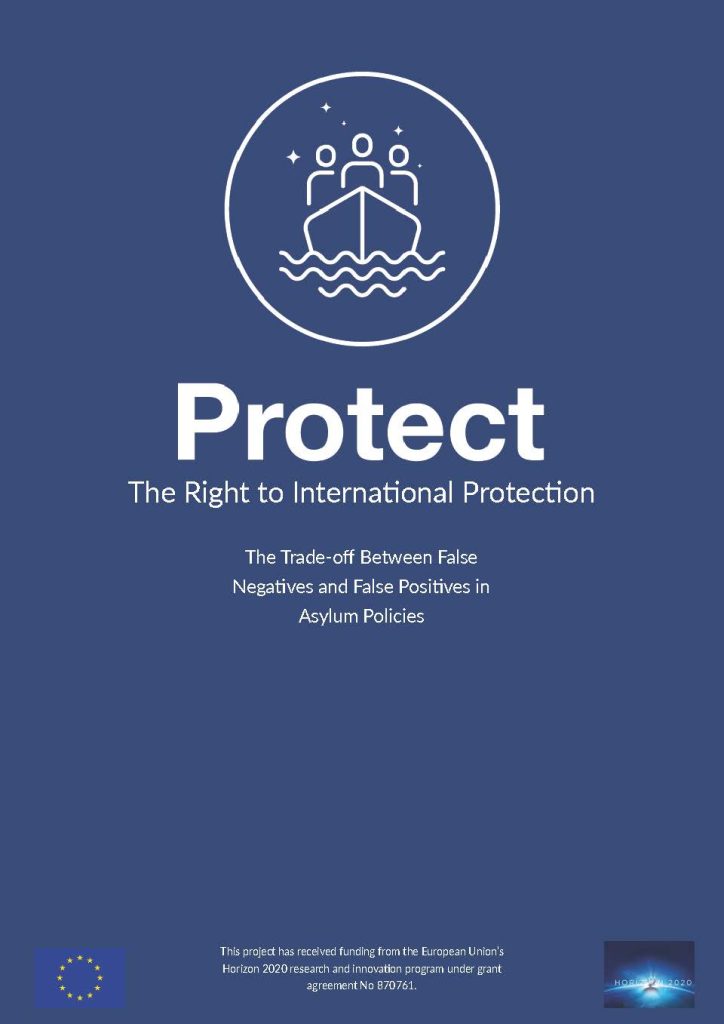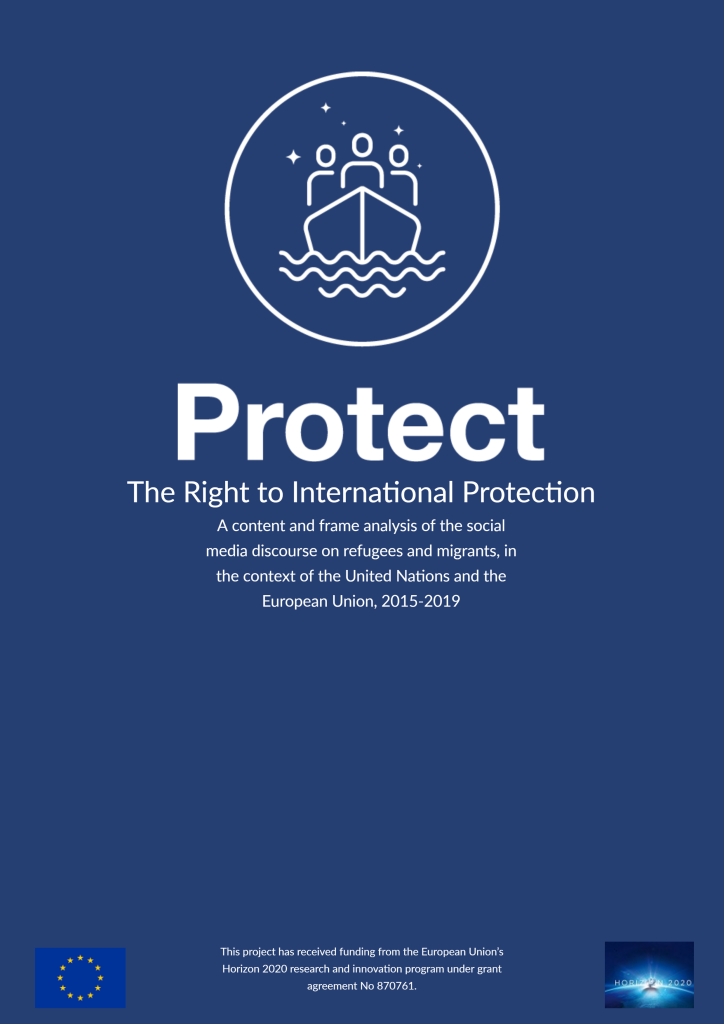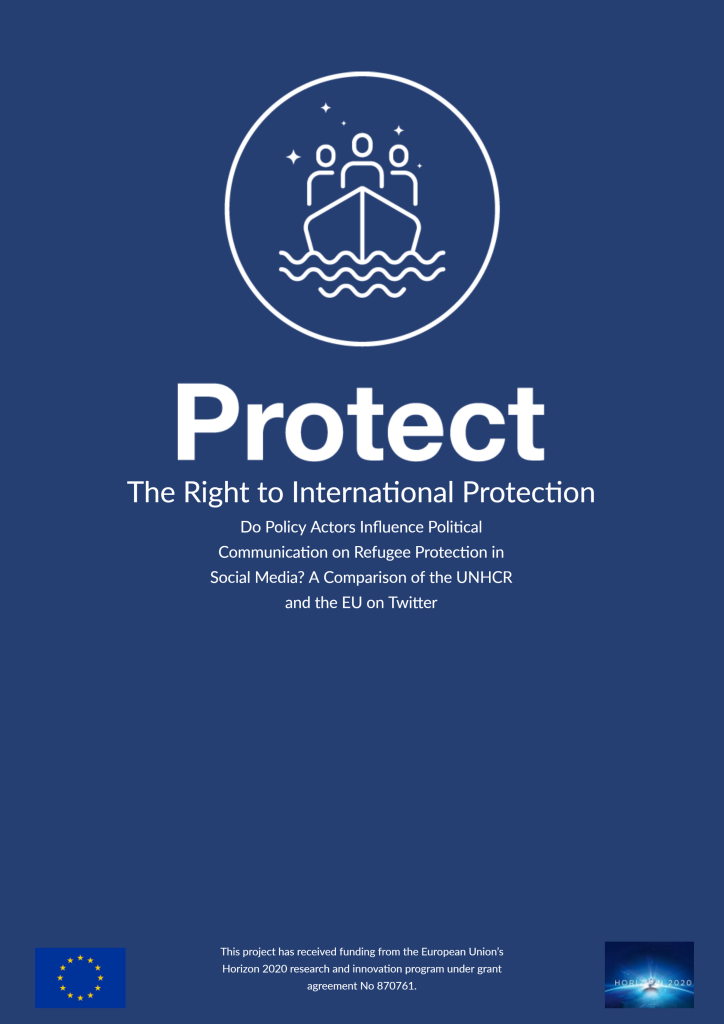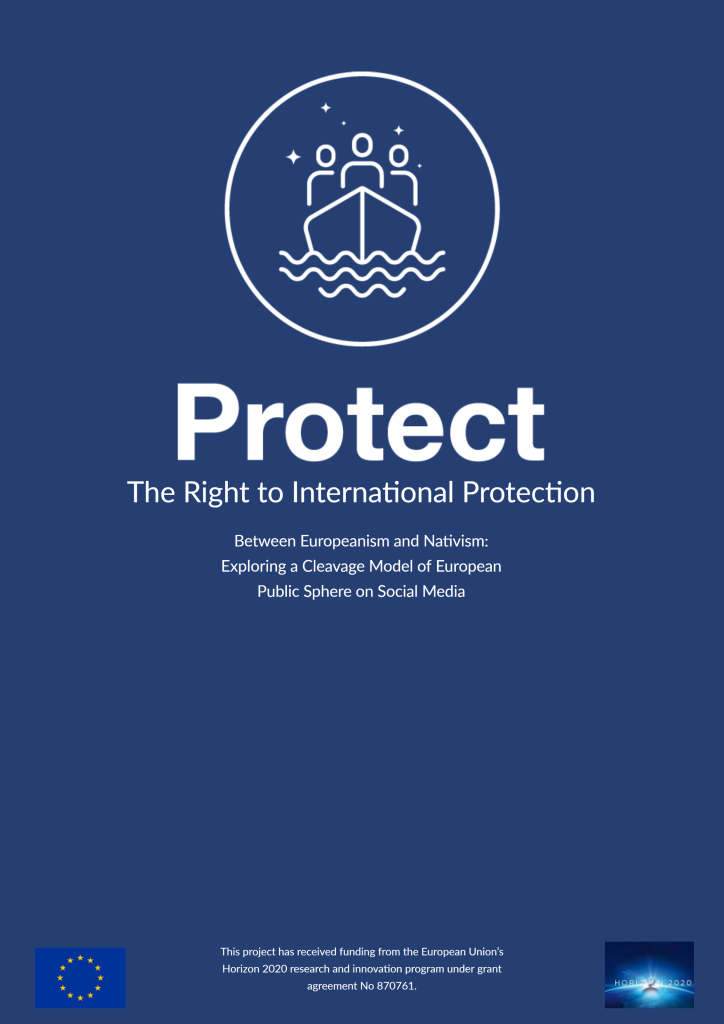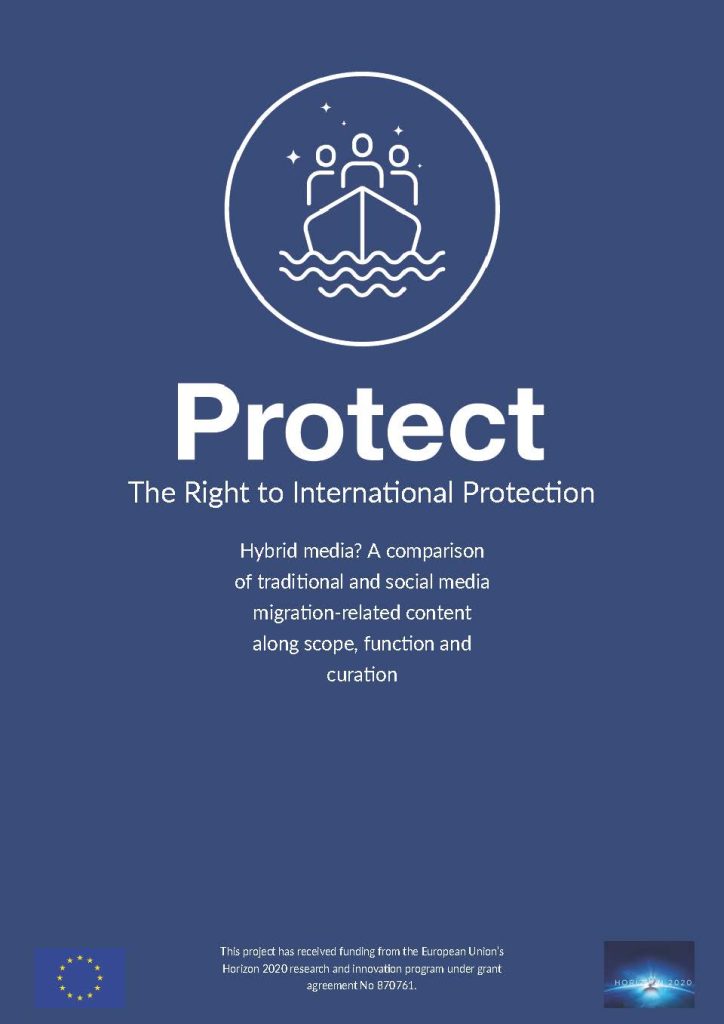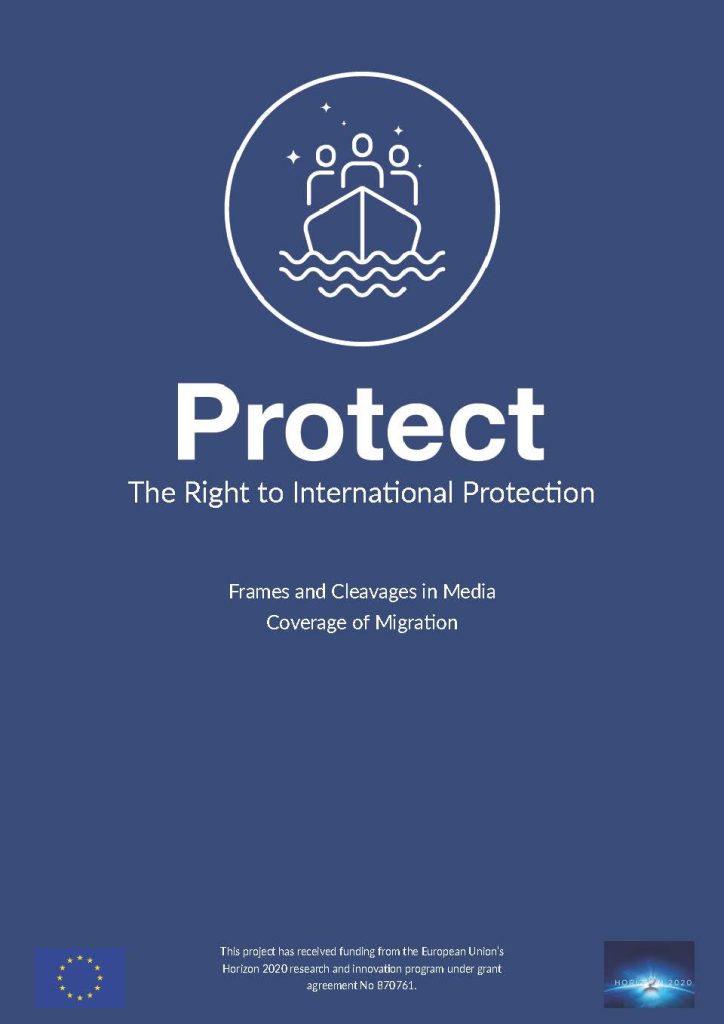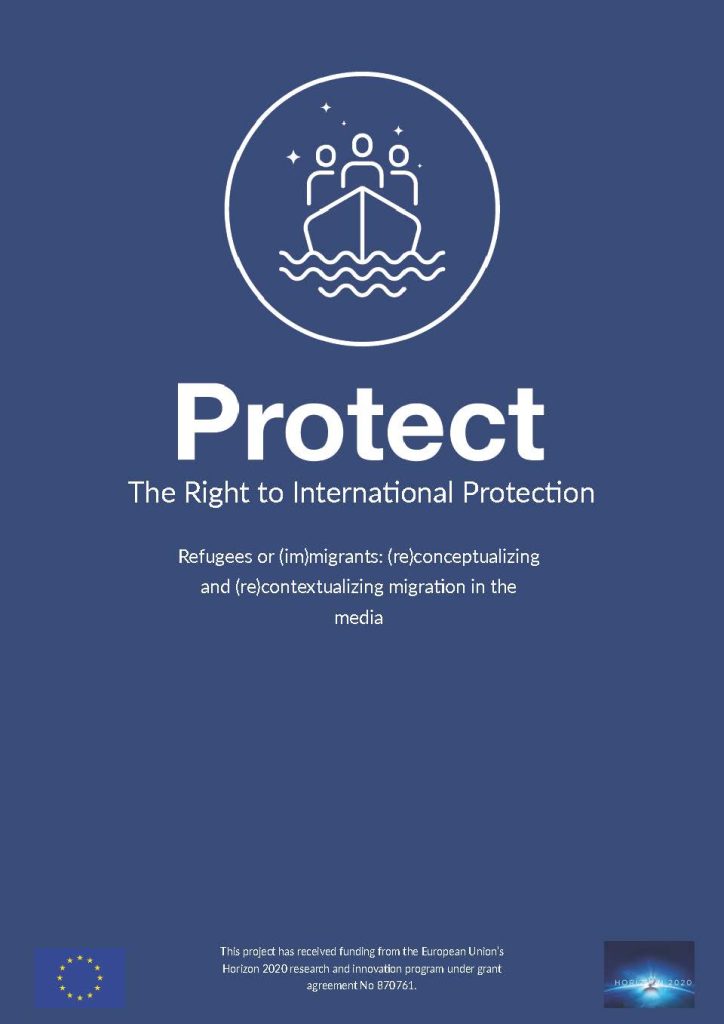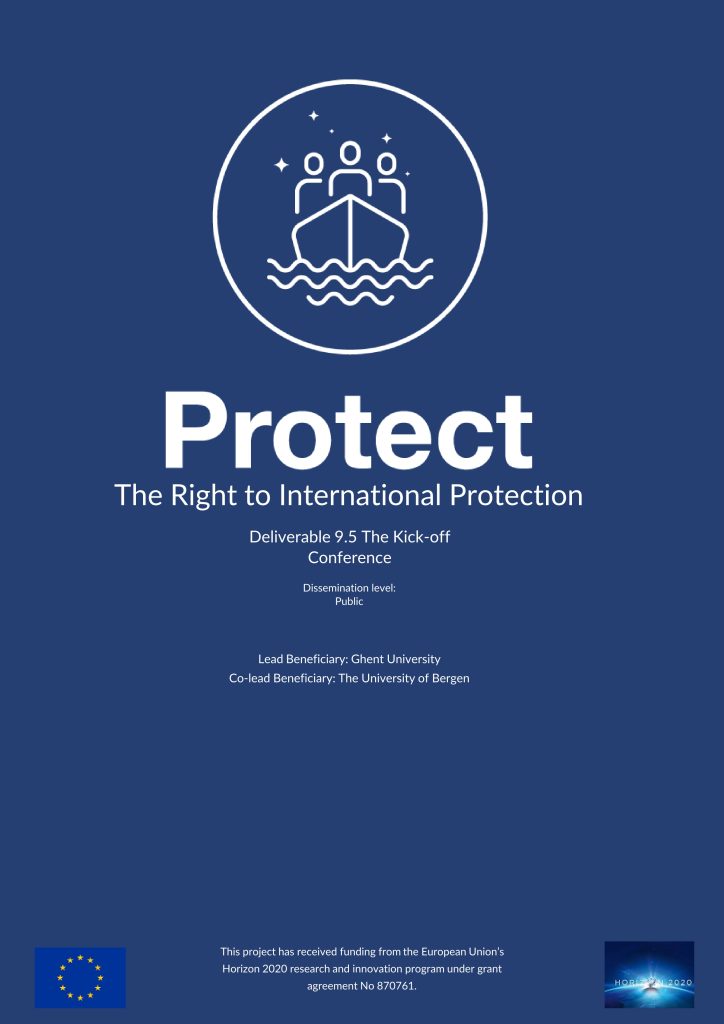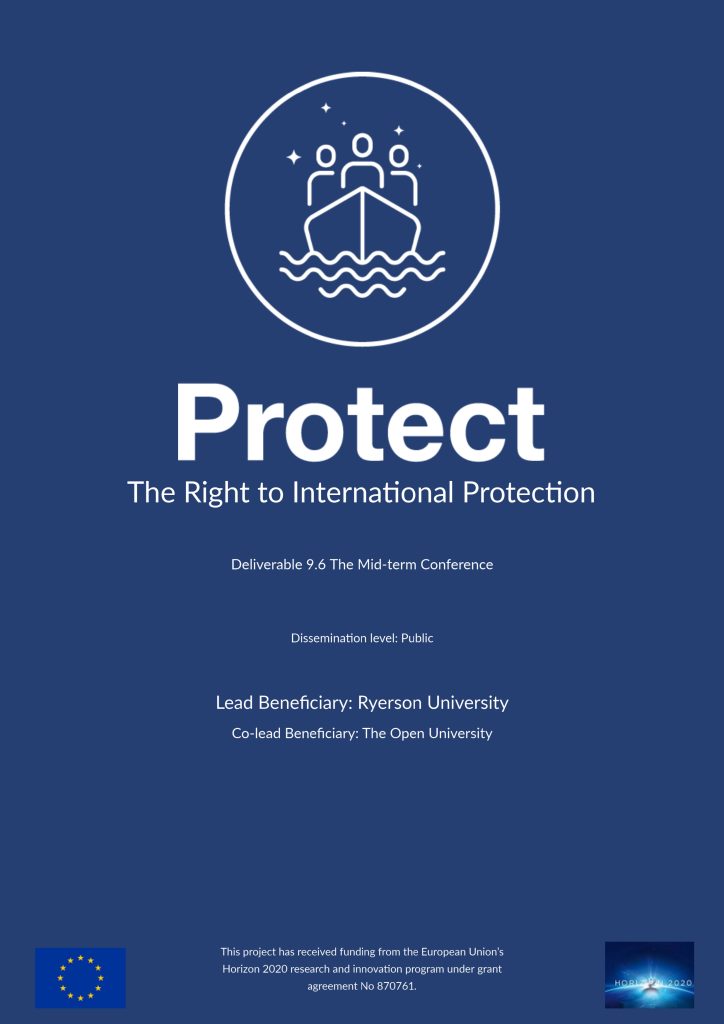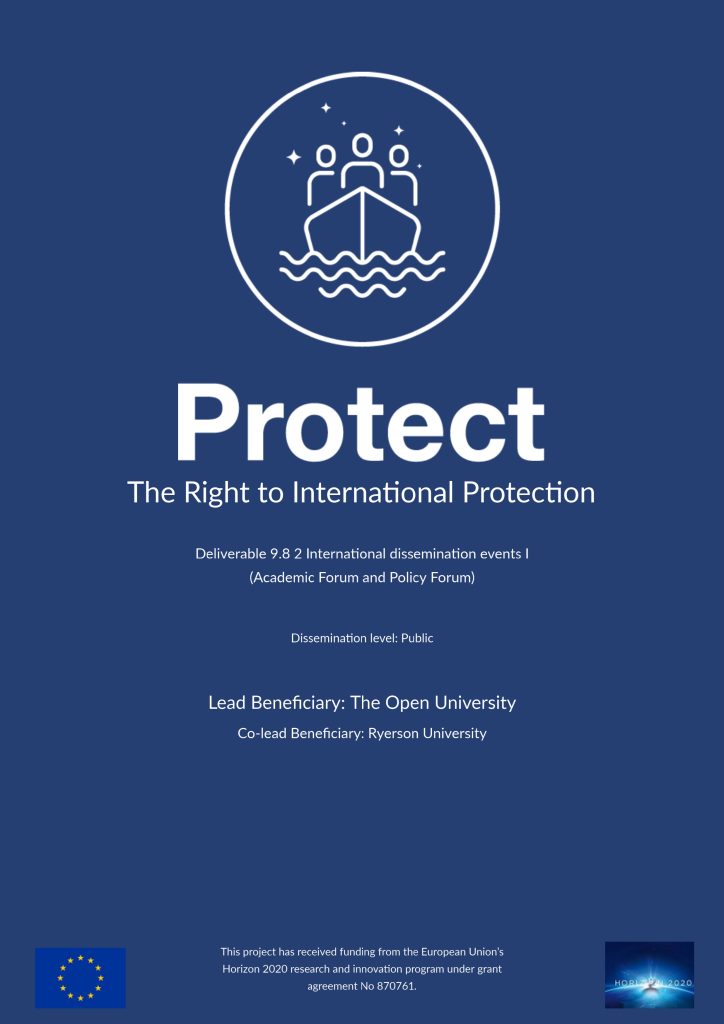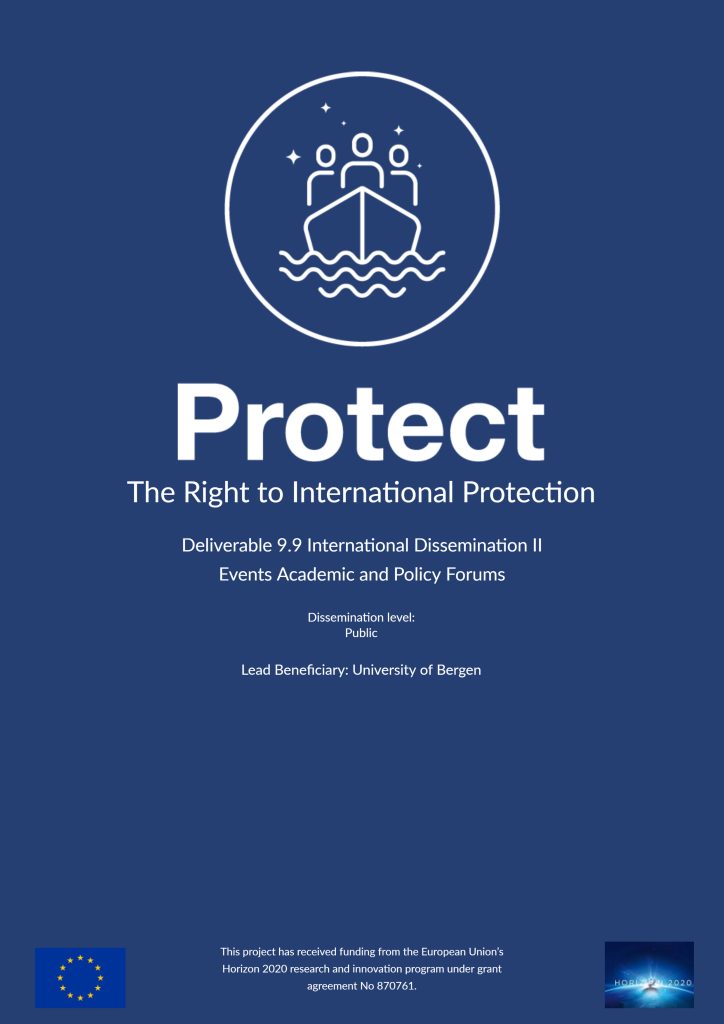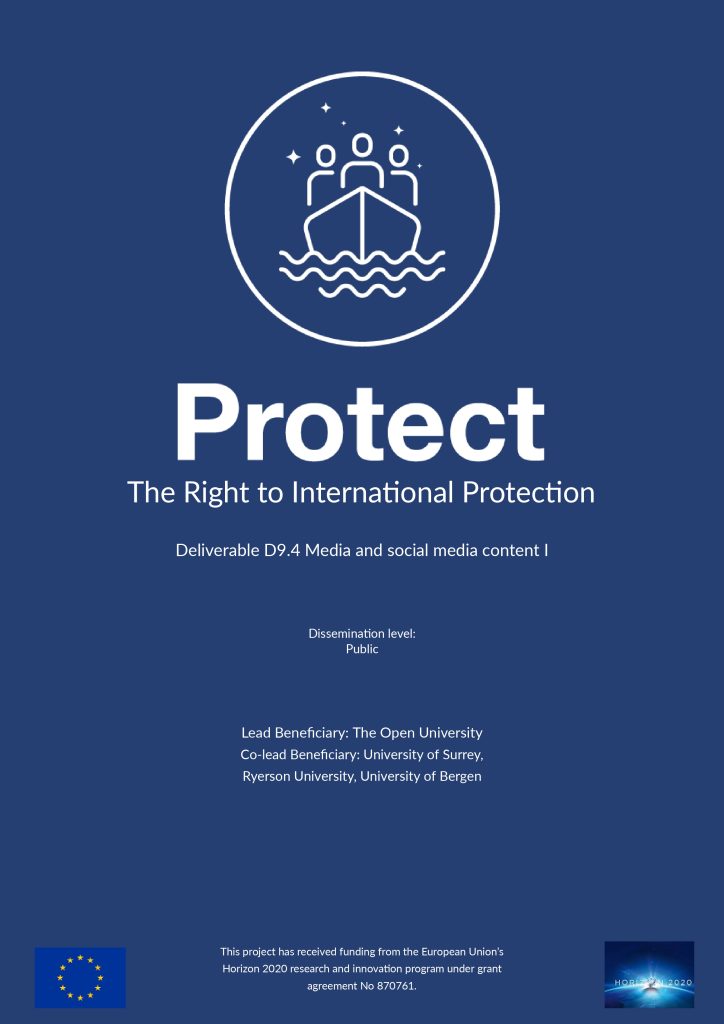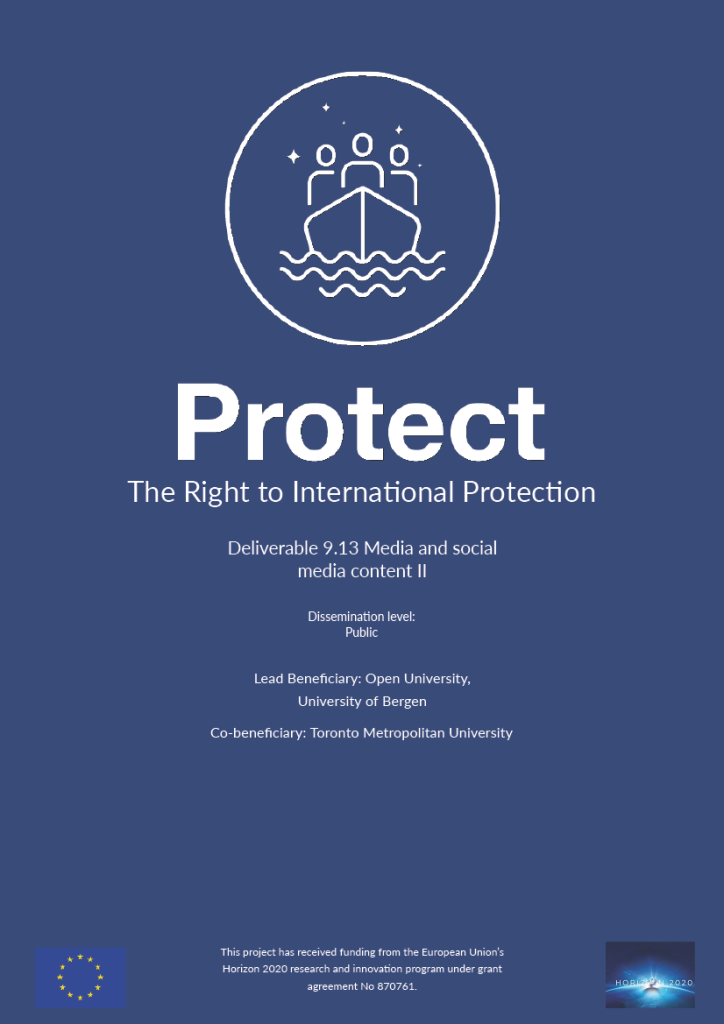
Publications
Table of Contents
Final outputs
Short policy briefs
Condensed findings
Research papers
Dissemination and communication
Journal articles
Special issues
Book chapters
Photo by Patrick Tomasso on Unsplash
PROTECT Final Outputs
Final Comparative Study: The Right to International Protection. A Pendulum between Globalization and Nativization?
Final Policy Brief: Lost in Migration. Which Policies are Needed to Safeguard the International Protection System?
PROTECT Knowledgebase
Short policy briefs
The full-length policy briefs may be found here.
WP2 Policy briefing on protection seeking migrants
WP3 Policy briefing on how to devise legal and institutional frames for asylum procedures
WP4 Policy briefing on vulnerability and field level governance of international protection
WP5 Policy briefing on civil society organisations and international protection
WP6 Policy briefing on how to gain public support to international responsibility-sharing in refugee protection
WP7 Policy briefing on how to communicate about international protection
Condensed findings
Condensed Results Report of PROTECT’s Legal Research
Condensed Results Report of PROTECT’s Governance and Historical Research
Condensed Results Report of PROTECT’s Fieldwork Research in Migratory Hotspots
Condensed Results Report of PROTECT’s Research on Surveying Civil Societies’ Attitudes
Condensed Results Report of PROTECT’s Research on Surveying Citizens’ Attitudes
Condensed Results Report of PROTECT’s Research on Analyzing Media and Social Media Discourses
PROTECT Research Papers
Editor: Pierre-Georges Van Wolleghem
Theories and Concepts
Conceptualizing the Right to International Protection: A Cleavage Theory Approach
A Comparative Research Framework for Studying the Global Refugee Compact’s Impact on International Protection
Devising the Policy Tools of a Human Rights-Based International Protection System
Legal Studies of Global Compacts and CEAS
A Practitioners’ Handbook on the Common European Asylum System (CEAS) and EU and Member States’ Commitments under the UN Global Compact on Refugees and the UN Global Compact for Safe, Orderly and Regular Migration
The UN Global Compacts and the Common European Asylum System: Coherence or Friction?
Implementing the UN Global Compacts for Refugees and Migrants in Times of Pandemic: A View from the EU Member States
The dynamic relationship between the Global Compact for Migration and Human Rights Law
Enhancing the Rights of protection-seeking migrants through the Global Compact for Migration: the case of EU asylum policy
From global to community: The availability of protection mechanisms for refugees in South Africa
Canada’s implementation of the UN Global Compacts on Migration and Refugees: Advancing foreign policy objectives and the status quo?
Reviewing the Reviews: The Global Compacts’ Added Value in Access to Asylum Procedures and Immigration Detention
Studies of Asylum Institutions and Procedures
Are the UN Member States Committed to the Global Refugee Compact’s International Solidarity Norm?
The role of the quality of the administration in asylum decision making:
Comparing recognition rates in EU member states
Institutional Architectures of Political Asylum in Europe Part I (1970-1992)
Institutional Architectures Historical Analysis of Selected EU Countries Part II (until 2018)
The Role of Institutional Architecture in the Reception of
Refugees in South Africa
Mapping Canada’s Refugee Determination System: 1950-2020
Do National Refugee Status Determination Procedures Affect International Refugee Protection?
Recognizing international protection: do institutional architectures matter?
Externalization of EU Migration and Asylum Policy
Mapping the external dimension on EU migration and asylum policies: what impact on the governance of asylum?
When securitization spills over across EU borders: A quantitative mapping of the external dimension of EU migration
and asylum policies
The External Dimension of the European Migration and Asylum Policy: the EU’s Organized Hypocrisy in Cooperation with Southern Neighbor Countries
Attitudes and Involvement of Civil Society Organizations
Case study reports on selected CSOs’ attitudes and activities
From cleavages to facts on the ground: A conceptualisation of the work of civil society organisations on matters of refugee and migration policy
Civil Society Organisations’ attitude and activity analysis
An analysis of the role of contextual factors on civil society organisations on matters of refugee and migration policy
Why do civil society organisations working on international protection tend to have positive dispositions towards refugees? A macro-level opportunity structure model
Ethnographic Studies at Migrants’ border entry points
When Vulnerability is at Stake: The Struggles of Asylum Seekers in Marseille
Draft analysis of how networks of international, national and local actors collaborate to reduce vulnerabilities on Six Sites in Europe, Canada, and South Africa
How key actors and stakeholders apply the notion of vulnerability in Europe, Canada, and South Africa
Governing migration through vulnerability at Spain’s southern maritime border
A comparative study of vulnerability as a globally mobile policy concept
Compatible Compacts? The ‘social life’ of vulnerability, migration governance and protection at the Zimbabwe-South Africa border
Vulnerability and the right to international protection: The case of Greece in the current refugee crisis
Relativism, Absolutism, and «Cultural Difference». Vulnerability and Boundaries Making in International Protection in Eastern Sicily
“I started to lose meaning in life”: Understanding the vulnerability of asylum seekers and non-status migrants in Toronto, Canada
Cross-sectional studies of citizen attitudes
The trade-off between admitting and paying. An experimental analysis of people’s attitudes toward responsibility-sharing in refugee issues
The Trade-off Between False Negatives and False Positives in Asylum Policies
Media studies of frames and discourses
A content and frame analysis of the social media discourse on refugees and migrants, in the context of the United Nations and the European Union, 2015-2019
Do Policy Actors Influence Political Communication on Refugee Protection in Social Media? A Comparison of the UNHCR and the EU on Twitter
Between Europeanism and Nativism: Exploring a Cleavage Model of European Public Sphere on Social Media
Hybrid media? A comparison of traditional and social media migration-related content along scope, function and curation
Frames and Cleavages in Media Coverage of Migration
Refugees or (im)migrants: (re)conceptualizing and (re)contextualizing migration in the media
Dissemination and communication
The Kick-off Conference
The Mid-term Conference
Final Conference Report
International Dissemination Events I: Academic Forum and Policy Forum
International Dissemination Events II: Academic and Policy Forums
Media and Social Media Content I
Media and social media content II
Knowledgebase User Interface
Journal articles
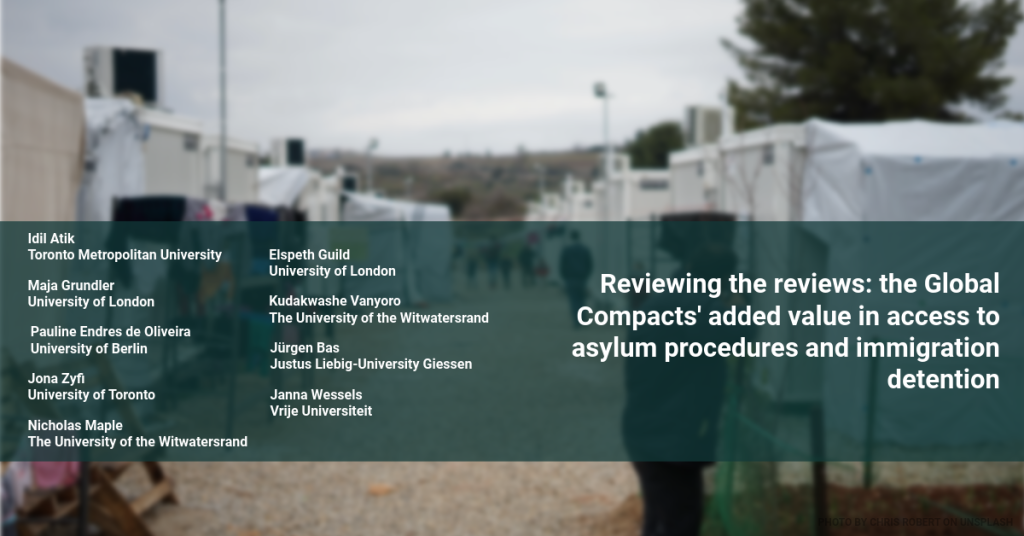
The Global Compact for Migration and the Global Compact on Refugees are based on binding international law instruments whose provisions they complement with “best practice” standards related to the treatment of refugees and other migrants. Although the Compacts are non-binding, they provide for review mechanisms to promote compliance with Compact standards. Such oversight is important to achieve progress in implementing the Compacts’ commitments. Yet, the current top-down and State-led review process does not offer an efficient platform for identifying cases of non-adherence to Compact standards. This article uses a case study approach to highlight instances of non-compliance with Compact standards in Canada, South Africa, and the European Union. We use a functionalist method of comparison to analyze State practice in these three regions in relation to (i) use of immigration detention and (ii) access to the asylum procedure, with access to healthcare as a cross-cutting issue. The article discusses how the Compacts’ review mechanisms could be improved and their added value in terms of their impact on domestic migration policies. It argues that both Compact review and implementation can be improved through increased civil society participation.
by Idil Atak (Toronto Metropolitan University), Maja Grundler (University of London), Pauline Endres de Oliveira (University of Berlin), Jürgen Bast (Justus Liebig-University Giessen), Elspeth Guild ( University of London), Nicholas Maple (The University of the Witwatersrand), Kudakwashe Vanyoro (The University of the Witwatersrand), Janna Wessels ( Vrije Universiteit) & Jona Zyfi (University of Toronto).
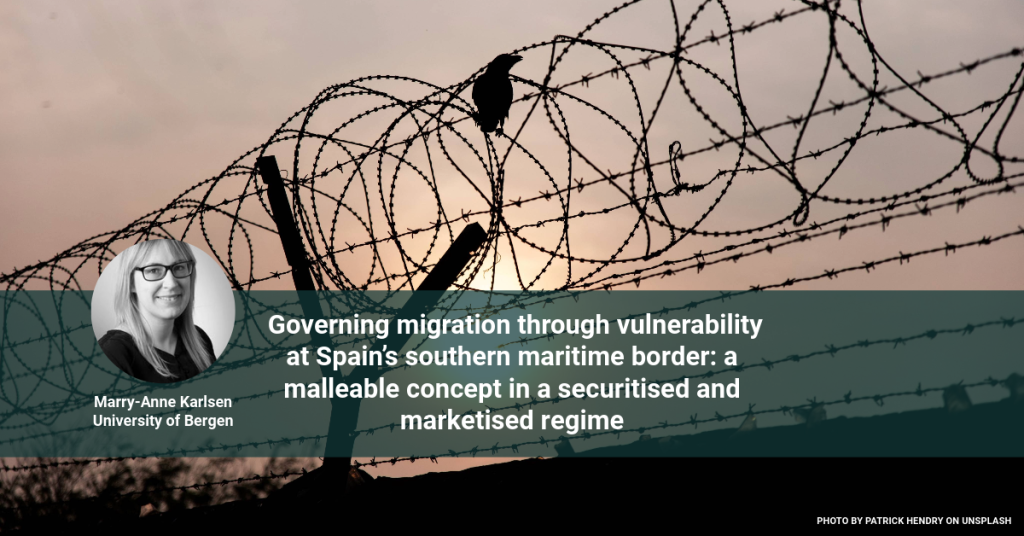
In the newly published article Governing migration through vulnerability at Spain’s southern maritime border: a malleable concept in a securitised and marketised regime‘, Marry-Anne delves into how actors in Spain’s Cádiz province, situated at the EU’s southern maritime border, interpret and apply ‘vulnerability’ in the context of migration and asylum. Her work uncovers ‘vulnerability’ as a mechanism governing those in ‘mixed movements,’ revealing its overlap with and fragmentation of established categories like asylum seekers and irregular migrants. This publication illuminates the increasing centrality of ‘vulnerability’ in migration and asylum policies, despite its ambiguity and controversy. It underscores the importance of understanding how ‘vulnerability’ functions as a governance tool in our mission to protect the rights of displaced individuals. This work provides valuable insights into how ‘vulnerability’ shapes policy and practice, strengthening our commitment to safeguarding those on the move.
by Marry-Anne Karlsen, (University of Bergen)
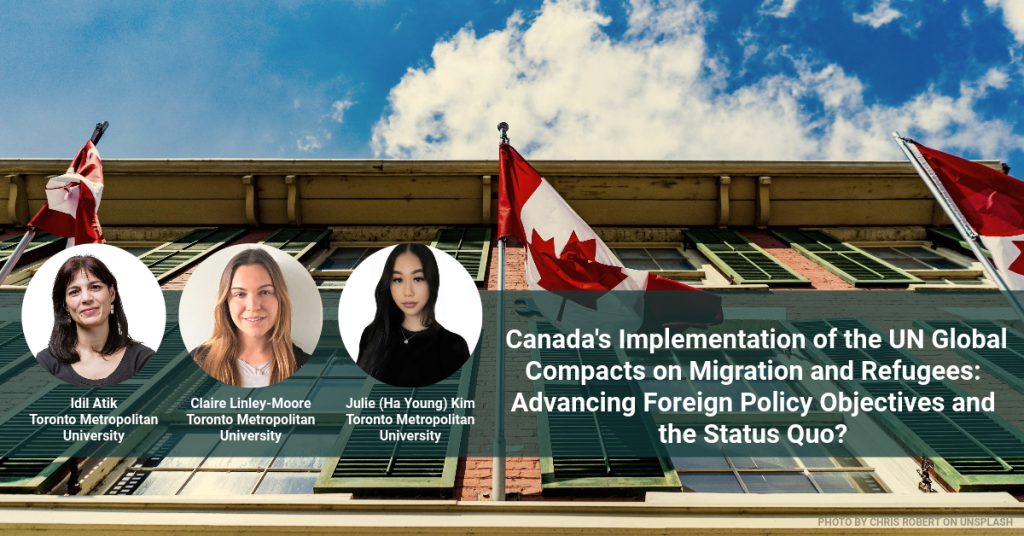
We congratulate our Canadian partners for their article Canada’s Implementation of the UN Global Compacts on Migration and Refugees: Advancing Foreign Policy Objectives and the Status Quo? published in the Refugee Survey Quarterly. In this paper, Idil Atak, Claire Linley-Moore, and Julie (Ha Young) Kim examine how the GCs have been received and applied in the Canadian context. Canada’s impact on the Global Compacts for Migration and Refugee protection has been significant. These international agreements aim to address the challenges faced by migrants and refugees, with a focus on equitable responsibility-sharing and human rights. Canada, as a champion country for the Global Compacts, has showcased its expertise in refugee resettlement, gender equality, and more. However, the impact of these Compacts on domestic policy remains limited, and their principles are often not fully integrated into Canadian practices. It’s crucial for Canada to align its domestic policies with the Global Compacts, ensuring a higher level of protection for migrants and refugees and demonstrating a full commitment to these international agreements.
by Idil Atak, Claire Linley-Moore and Julie (Ha Young) Kim (Toronto Metropolitan University)

The origins of this special issue lie in multiple workshops and panel discussions over the past 5 years between the African Centre for Migration & Society (ACMS) at the University of Witwatersrand, the Refugee Law Initiative (RLI) at the University of London, the editorial team, and our two invited experts, Jeff Crisp and Lucy Hovil. Yet the roots of the special issue (and part of its title) can be traced to long before this, with the work of Loren Landau and Roni Amit who in 2014 suggested that the global refugee regime is “something akin to a distant weather pattern with only indirect (and rarely determinative) effects on local actions” in southern Africa. The special issue engages with these ideas almost a decade on, with each author asked to critically reflect on this assertion within their work on the continent. Certainly, the relevance of the global refugee regime in Africa requires renewed investigation. At a time when Africa continues to host a considerable proportion of the world’s refugee population, when global responsibility sharing continues to stall, and when international initiatives remain focused on Western conceptualisations of protection, there is an urgent need to unpack the global regime’s contemporary role in the day-to-day lives of refugees and other forced migrants on the continent.
by Nicholas Maple, Kudakwashe Vanyoro, E. Tendayi Achiume, Jo Vearey, and Achieng Akena
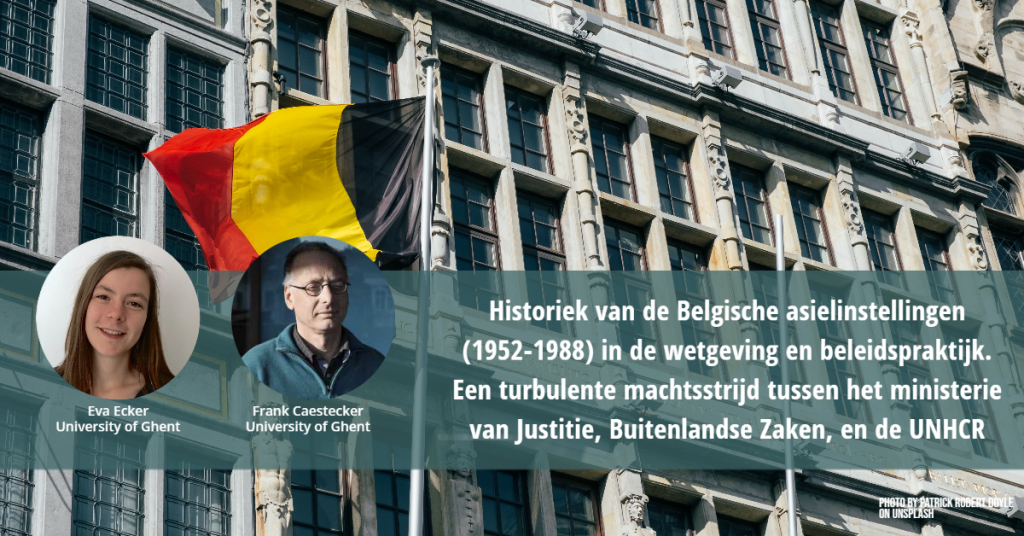
Between 1952 and 1988, the competence to conduct the refugee status determination process underwent a unique evolution attributable to several ‘tug-of-wars’ between mainly the ministries of Justice and Foreign Affairs, and the UNHCR, each time resulting in typical Belgian compromises. Initially, the Belgian state entrusted this responsibility, as practically the only West European country at the time, to the newly created UNHCR. In the 1950s, governments experienced few risks when granting refugee protection. This changed in the 1960s when the profile of the asylum seeker changed and recognition of refugees increasingly conflicted with other interests. Therefore, the Ministries of Foreign Affairs and Justice wanted to influence the recognition policy in an informal manner from the end of the ’60s in order not to burden the alleged Belgian interests. In the 1970s, the issue moved up on the political agenda, partly because asylum became a more important immigration channel. The 1980 aliens act strengthened the legal position of aliens. However UNHCR could not guarantee the right of appeal. This meant the definitive end of UNHCR as the authority entrusted with the recognition of refugees and the transfer of the competence to conduct the refugee status determination process to the Belgian authorities in 1988.
By Eva Ecker and Frank Caestecker (University of Ghent)
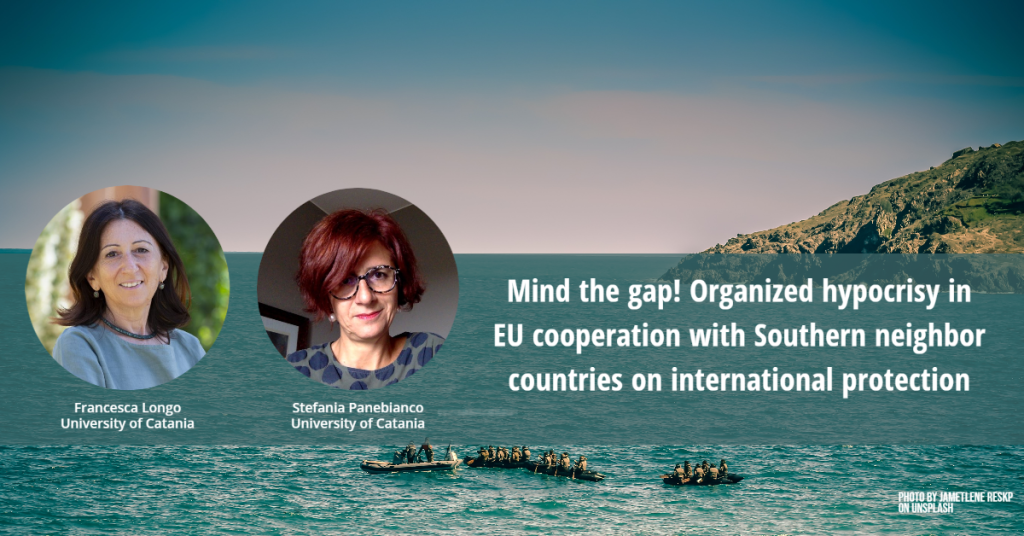
The European Union (EU) has reacted to the migration crises of the last decade with growing externalization of migration management to neighbor countries often accused of not respecting human rights and individual liberties. Focusing on EU cooperation with the Southern neighborhood, as defined within the European Neighborhood Policy (ENP) framework, this paper investigates the recent developments in the EU’s external migration policies, demonstrating that there is a gap between EU discourses and policy instruments identified by the EU as strategic tools of the European migration and asylum policy (MAP). The research critically analyzes the EU’s cooperation with SNCs concerning migration, as developed via international agreements, action plans, and mobility partnerships under the umbrella of the ENP. In particular, it explores the incompatibility between the European MAP instruments and international protection.
By Francesca Longo, Stefania Panebianco (University of Catania) and Giuseppe Cannata

The concentration of the world’s refugees in developing countries calls for international collaboration on the matter. In the face of concerns voiced not only amongst politicians but also the public, we investigate how people trade-off the two most prominent responsibility-sharing mechanism. We conduct a survey experiment in 26 countries asking whether people would rather: (a) admit more asylum seekers and (b) provide financial assistance to the host countries. We find that most respondents prefer admitting asylum seekers over paying. We also establish significant individual-level heterogeneity that sheds new light on people’s attitudes towards asylum seekers. Importantly, we report on the effect of welfare chauvinism and nativism on the willingness to admit rather than to pay.
By Cornelius Cappelen, Hakan G. Sicakkan and Pierre Georges Van Wolleghem – University of Bergen
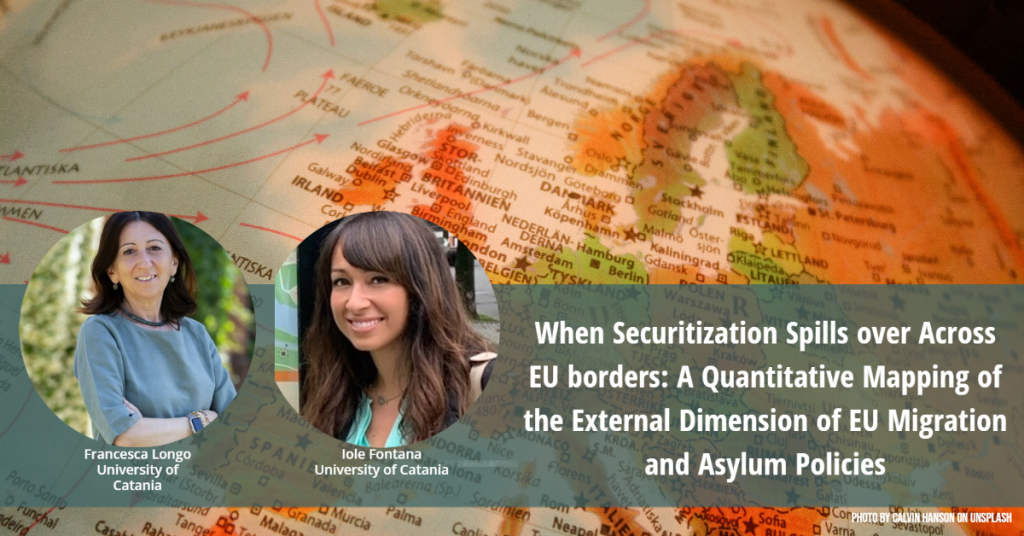
This article provides new empirical insights on the external dimension (ED) of European Union (EU) migration and asylum policies (MAPs) as a case of securitization, by mapping its policy tools across time and space. More specifically, the goal of the article is two-fold. It engages into a new mapping exercise that enables an understanding of how ‘geographically spread’ the ED of EU policies on migration and asylum is, as well as providing insights into ‘where’ and ‘what’ the EU has externalized in the last twenty years. Second, it assesses to what extent the number, type and distribution of ED policy tools reflect dynamics of the securitization of migration and asylum. The article builds upon the literature on securitization and externalization, looking at it afresh by adopting a perspective focused on policy tools. Empirically, the analysis is based upon a new comprehensive database containing data on 153 ED tools according to their characteristics and regions. The article argues not only that policy tools characterize the ED as a further feature of the securitization of migration, but also that externalization through practices of securitization has not been limited to the EU immediate borderlands but has rather spilled over across regions and frontiers.
By Francesca Longo and Iole Pina Fontana – University of Catania
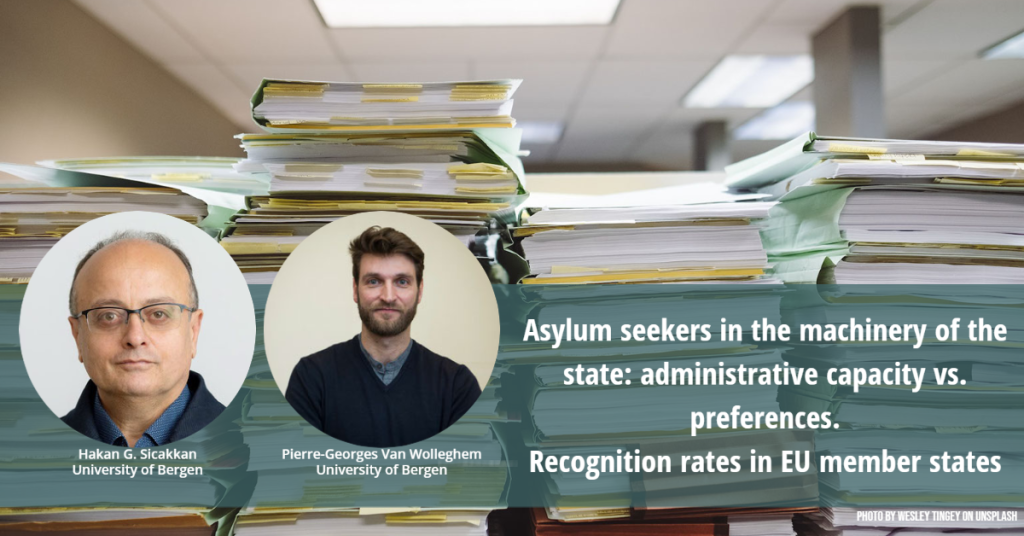
Studies have sought to explain variation in protection recognition rates between EU member states with, however, limited explanatory power. Surprisingly, few have contemplated the role of the administration, despite it being at the centre of the process through which asylum claims are examined. We posit that recognition rates are significantly affected by administrative capacity, although the administration’s action may be mitigated by political factors. Our findings show that administrative effectiveness and experience in asylum matters yield higher recognition rates. We show that government preferences and the overall political context affect protection recognition, too. Importantly, we also find that the mechanisms at play are different if we consider the different forms of protection.
By Pierre Georges Van Wolleghem and Hakan G. Sicakkan – University of Bergen
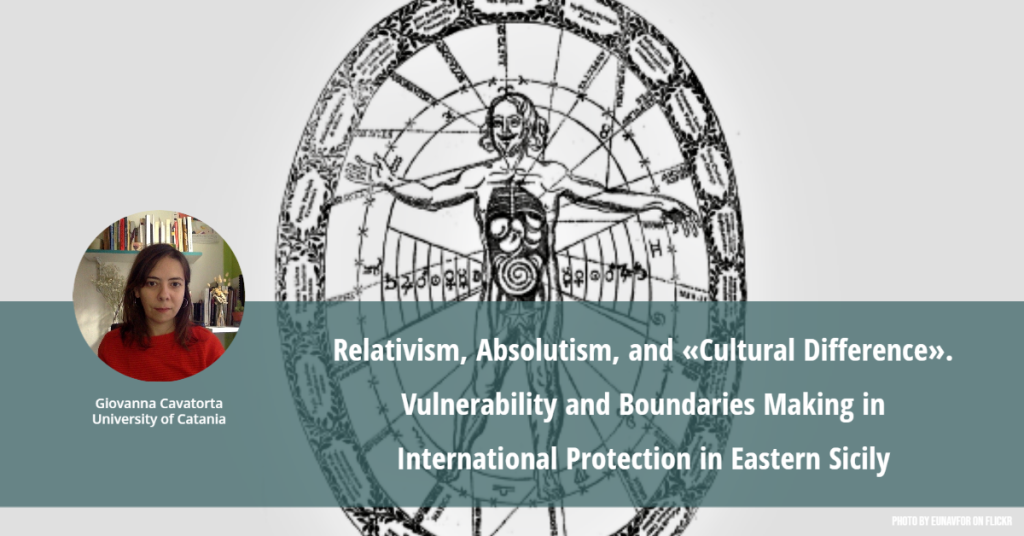
Vulnerability came to be a cardinal term for the humanitarian politics of life. On the one hand, it is naturalised as a shared condition and, at the same time, as it is linked to the recognition of specific needs, it becomes a condition for accessing certain rights. As a concept vulnerability tries to conjugate a theoretical aporia: all human beings are vulnerable, but certain subjects or groups are more so. This dilemma becomes particularly relevant in the field of international protection, where obtaining the label of vulnerable constitutes a crucial stake in accessing the right to stay. Through fieldwork research in eastern Sicily, the article moves from the recognition of certain discontinuities in this field. On the one hand, the margins for declaring vulnerable all actors involved in the field of reception, including so-called natives, have been extended. On the other hand, the possibilities have been reduced, through an attempt to improve the efficiency and quality of assessment procedures, which should include a transcultural sensitivity. The article, therefore, engages in an analysis of vulnerability policies within contemporary asylum governance, considering both those deployed by public service providers and by migrants themselves. Showing that the institutional allocation of the status of “vulnerable” is the result of complex and ambivalent practices, involving different actors, logics and discourses, the article explores the institutional will to both relativise and absolutise its work. Also illuminating the dimensions of political economy and structural vulnerability, the text attempts to articulate three levels that are implicated in the use of the category of vulnerability in immigration policies. The article concludes by offering some considerations regarding the controversial opportunity to continue to involve anthropology within this field of study.
By Giovanna Cavatorta – University of Catania
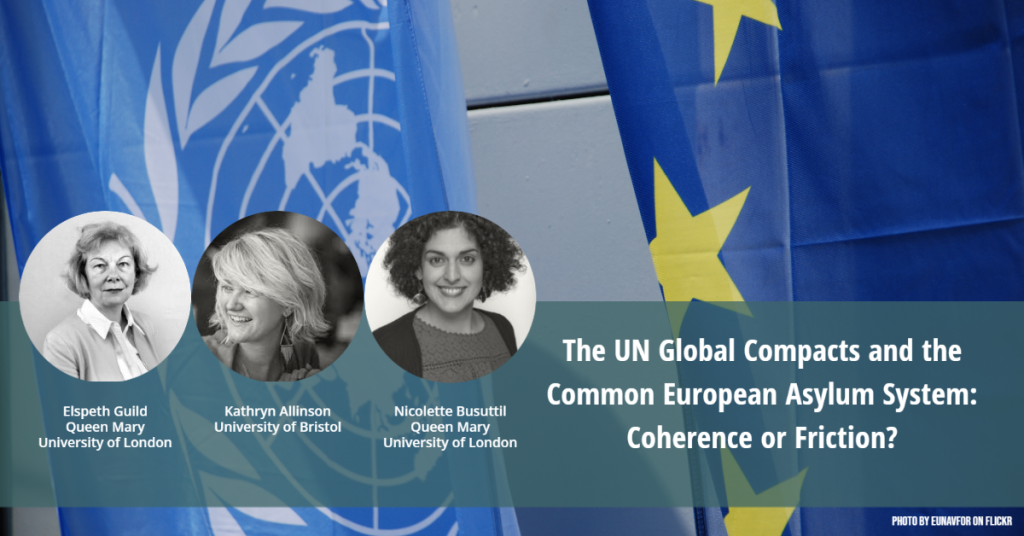
This paper examines the “protective potential” of the Global Compacts on Refugees and Migrants vis à vis existing commitments to fundamental rights within the European Union (EU). The relationship between the two normative frameworks is scrutinised to establish the extent to which the two might be mutually supportive or contradictory, since this determines the Compacts’ capacity to inform the interpretation of EU fundamental rights within the Common European Asylum System (CEAS). This paper explores this protective potential through three of the Compacts’ key guiding principles: respect for human rights and the rule of law, the principle of non-regression, and the principle of non-discrimination. The Compacts’ commitments to the first two are presented as sites of coherence where the Compacts concretely express pre-existing protections within EU law and provide a blueprint for implementation in the migration sphere. However, the Compacts’ principle of non-discrimination reveals an area of friction with EU primary law. It is argued that the implementation of this principle can address the inherently discriminatory system underpinning EU law. Within the EU, rather than undermining international and national human rights obligations, the Compacts present an opportunity to refine the implementation of existing EU fundamental rights obligations applicable to migrants and refugees.
By Elspeth Guild, Kathryn Allinson and Nicolette Busuttil – Queen Mary University of London

Local integration has long been seen as the “forgotten” durable solution to refugee displacement evidenced by the reluctance of governments across the world to accord refugees a new citizenship. This article goes further. It argues that local integration as a durable solution has not been merely forgotten, but deliberately avoided at a national, regional and international level. As a result, its veracity as a realistic durable solution for the majority of refugees is now in question.
By Lucy Hovil and Nicholas Maple, University of Witwatersrand

The European Union’s common public sphere project dates back to the 1960s and relies on Europeanisation through the gradual eradication of communication boundaries between its member countries. However, it is evident by now that Europeanisation of national public spheres is hard to achieve by increasing overlaps between national public spheres, synchronisation of news reporting across national boundaries, or diffusion of Europeanist norms into national politics. The European Union’s common public sphere project may hence be in danger. This calls for explorations of other imaginable models of the public sphere for Europe. Are there traces of other modes of transnational public sphere emerging in Europe? In this article, we explore a models of the transnational public sphere which is based on an alternative concept of Europeanisation derived from the cleavage theory. By drawing on social media data and employing tools of social network analysis, we demonstrate the empirical possibility of a cleavage model of the European public sphere.
By Hakan G. Sicakkan, University of Bergen and Raphael H. Heiberger, University of Stuttgart

This article explores how temporal disruptions at international borders shape immobile bodies’ experiences and modes of waiting by focusing on irregular Zimbabwean migrant men at the Zimbabwe-South Africa border who have arrived in South Africa but are restricted in moving further into the interior. It argues that waiting is a component of both governing these migrants as well as them seeking agency through the relationship between time, space and humanitarianism in this border regime. This shows how immobilities at ‘carceral junctions’ can be conceptualised as in time as much as in space. The article is based upon four months of ethnographic field research at the ‘I Believe in Jesus Church’ men’s shelter in the border town of Musina. The intersections of immobility and temporal agency in this article contribute to a growing body of work that shows that the relationship between resistance and domination in waiting is ambivalent. This article also troubles assumptions about immobility as an experience that leads the inhabitants of humanitarian camps as well as carceral time-spaces to realise the status of ‘bare life’. While imposed forces make assumptions about the future precarious, the precariousness of the future also creates multiple and new possibilities.
By Kudakwashe Vanyoro, African Centre for Migration & Society – University of Witwatersrand
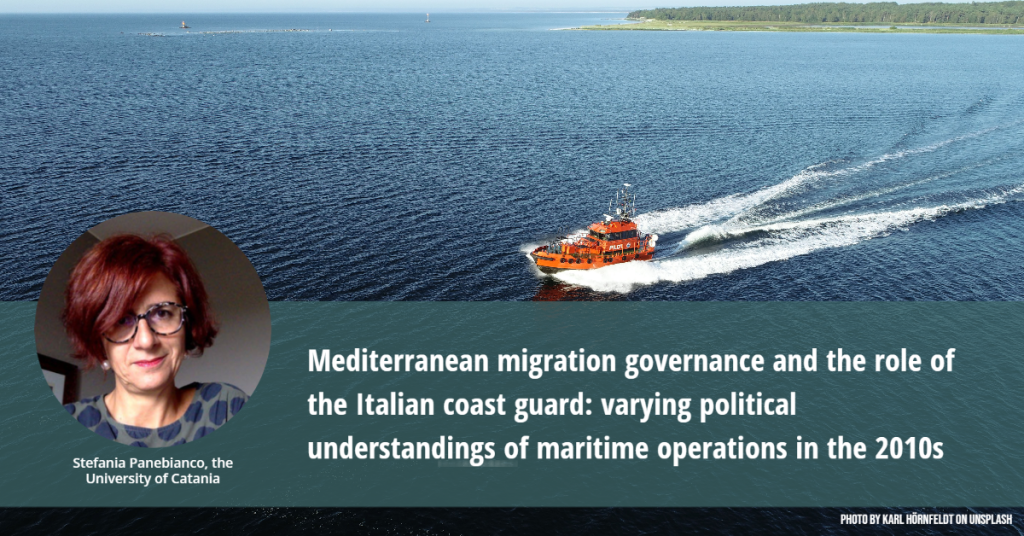
Situated on the EU’s Mediterranean borders, Italy provides the setting for a case study aimed at understanding Mediterranean migration governance in the 2010s. We adopt an actor-centred approach to explore how the Italian coast guard’s humanitarian agency was constrained and reshaped in a changed environment. We draw upon the sense-making of Italy’s political leaders and its impact on the humanitarian practices of the Italian coast guard. Migration politics is marked by political discourses framing interests and priorities according to the sense-making of the political leadership. In the last decade, Italian political leaders have constructed and reconstructed discourses on migration, providing a different understanding of the technical capacity to respond to crisis situations. In a few years, the Mare Nostrum operation was dismantled and replaced by a restrictive ‘closed-ports’ strategy to guarantee border control. Humanitarian operations at sea, a pillar of migration governance in the mid-2010s, were de facto constrained. Focusing on the pivotal role of the Italian coast guard in conducting maritime operations, we explain why its role of vanguard in developing humanitarian practices was marginalized over time.
By Stefania Panebianco, the University of Catania

In the midst of the Covid-19 crisis, the EU discourse on migration has acquired a humanitarian dimension that deserves investigation. The European Commission in particular has provided a discursive conceptualisation of the European human and humane approach to migration, promoting a change in the EU migration frame. Qualitative discourse analysis suggests that the European Commission’s programmatic discourse is not just a coordinative discourse among policy actors, it rather aims to shape the preferences of EU policy-makers emphasising strategic ideas and principles enshrined in EU Treaties. The Covid-19 crisis could thus be a window of opportunity for the European Union to embark on a new migration governance framed within a humane approach.
By Stefania Panebianco, the University of Catania
Special issues
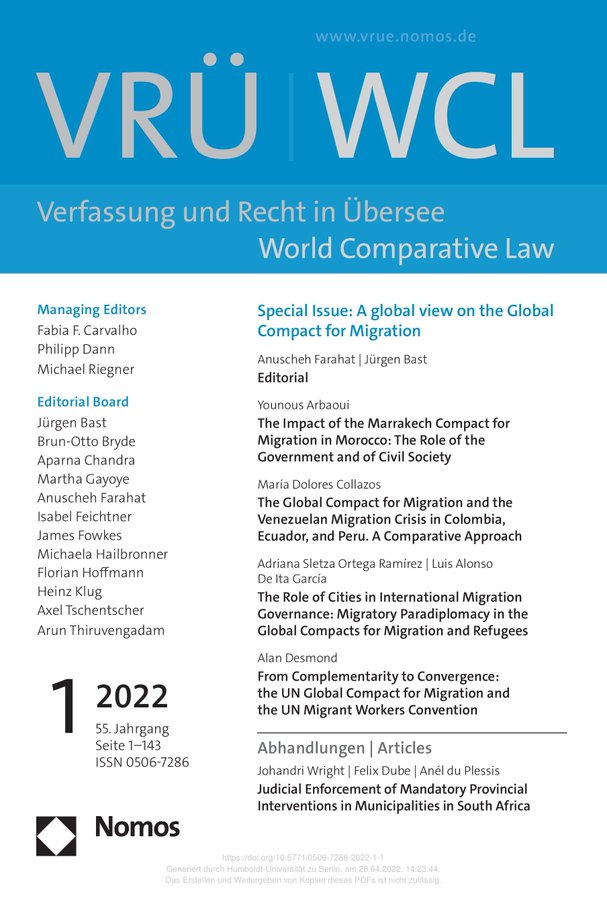
VRÜ Verfassung und Recht in Übersee / A global view on the Global Compact for Migration – by Anuscheh Farahat and Jürgen Bast
Nomos, 2022. Vol 55, Issue 1
PROTECT researcher Jürgen Bast, together with Prof. Dr. Anuscheh Farahat edited a special issue of the journal “Verfassung und Recht in Übersee (VRÜ)/World Comparative Law (WCL)”, which deals with the Global Compact for Migration from a comparative perspective. Shortly before the start of the first International Migration Review Forum, the issue deals with the reception of the GCM in various regions of the world (with contributions on the reception and implementation in Latin America and Morocco) and also offers an article about the potential of the GCM in realtion to the UN Migrant Workers Convention and a contribution to the role of cities and municipalities in the implementation of the GCM. In the introduction, Jürgen Bast and Anuscheh Farahat deal with the structural and institutional requirements for the implementation of the GCM and try to identify research perspectives in relation to this.
Chapters in books
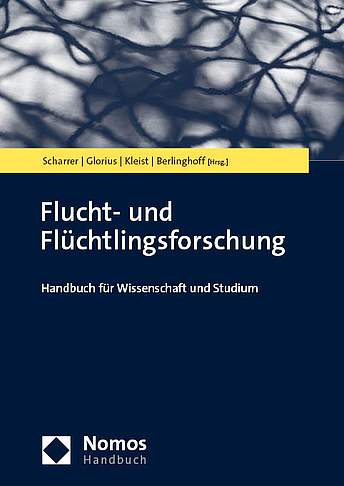
West-Mitteleuropa – by Eva Ecker and Frank Caestecker (University of Ghent)
Nomos, 2023.
Research on flight and refugees has been experiencing a boom in the German-speaking regions since about 2015. This handbook opens up the field in all its breadth and at the same time critically reflects the state of research. The handbook is aimed at researchers and teachers as well as at students and interested practitioners. The chapter by Ecker and Caestecker is in Part IV, which takes a closer look at refugee movements and policies in the world’s regions.
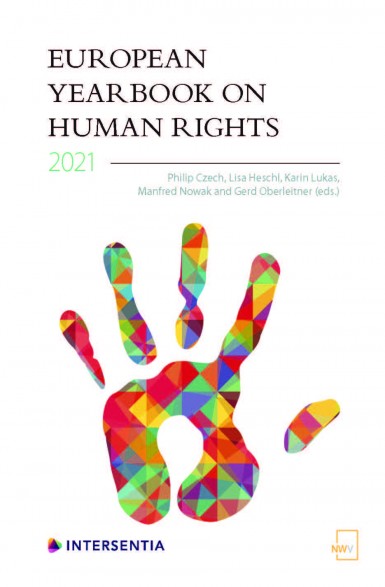
Implementing the UN Global Compacts for Refugees and Migrants in Times of Pandemic: A View from the EUMS – by Elspeth Guild, Kathryn Allinson and Nicolette Busuttil
Intersentia, 2021.
COVID-19 and the wide range of emergency measures that governments and policy makers have introduced in the name of fighting the pandemic have shaped our lives over the past year and a half. The thirteenth edition of the European Yearbook on Human Rights takes the opportunity to reflect on the impact that COVID-19 has had on human rights and to assess the proportionality and necessity of state responses to the pandemic in order to ensure a resilient human rights system in the future.

